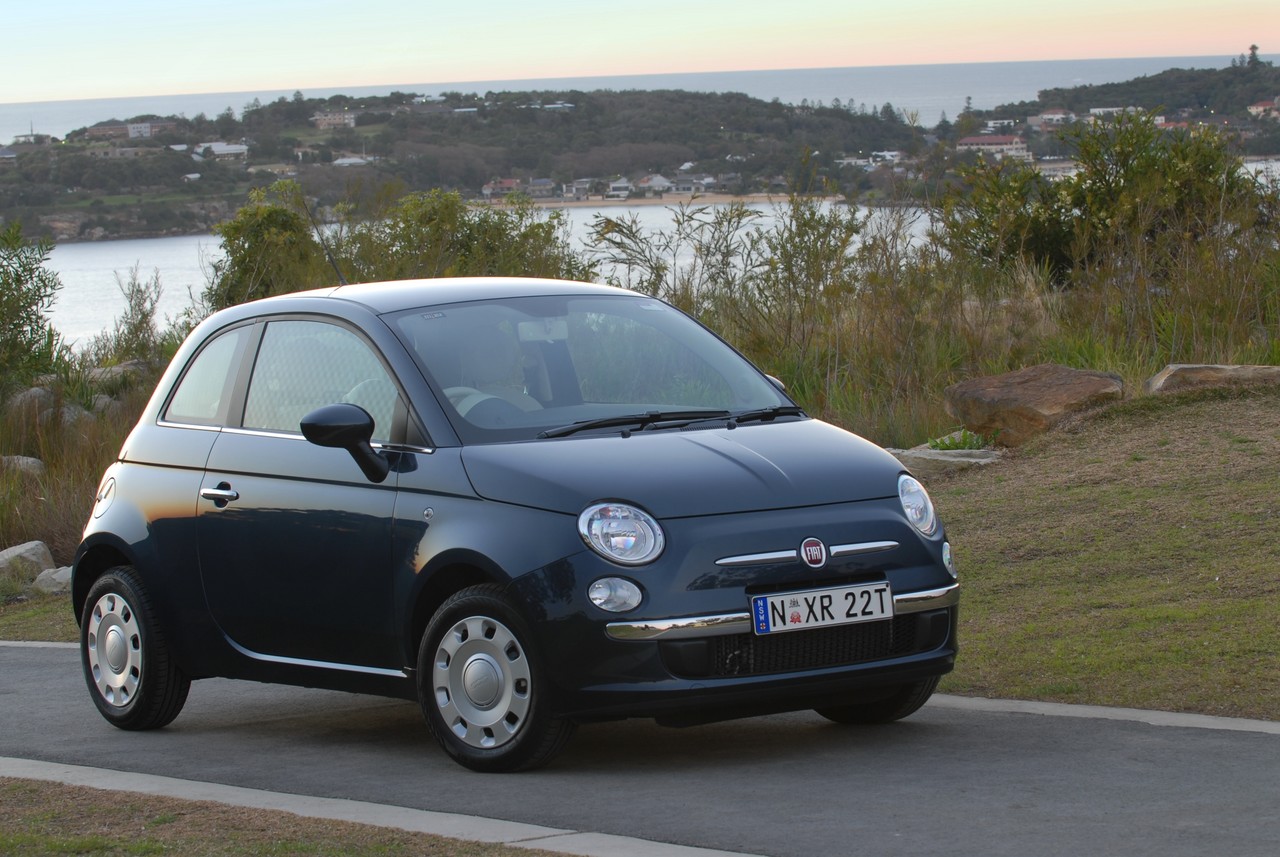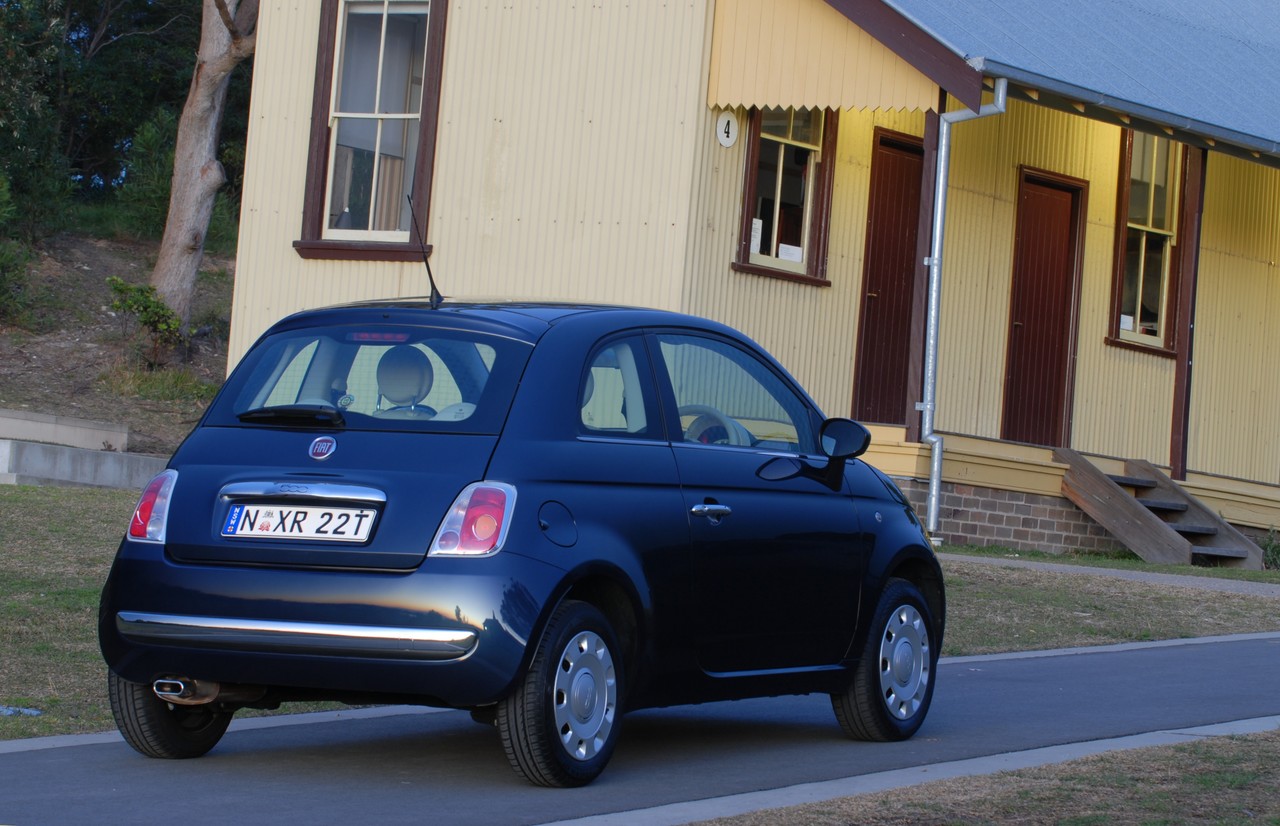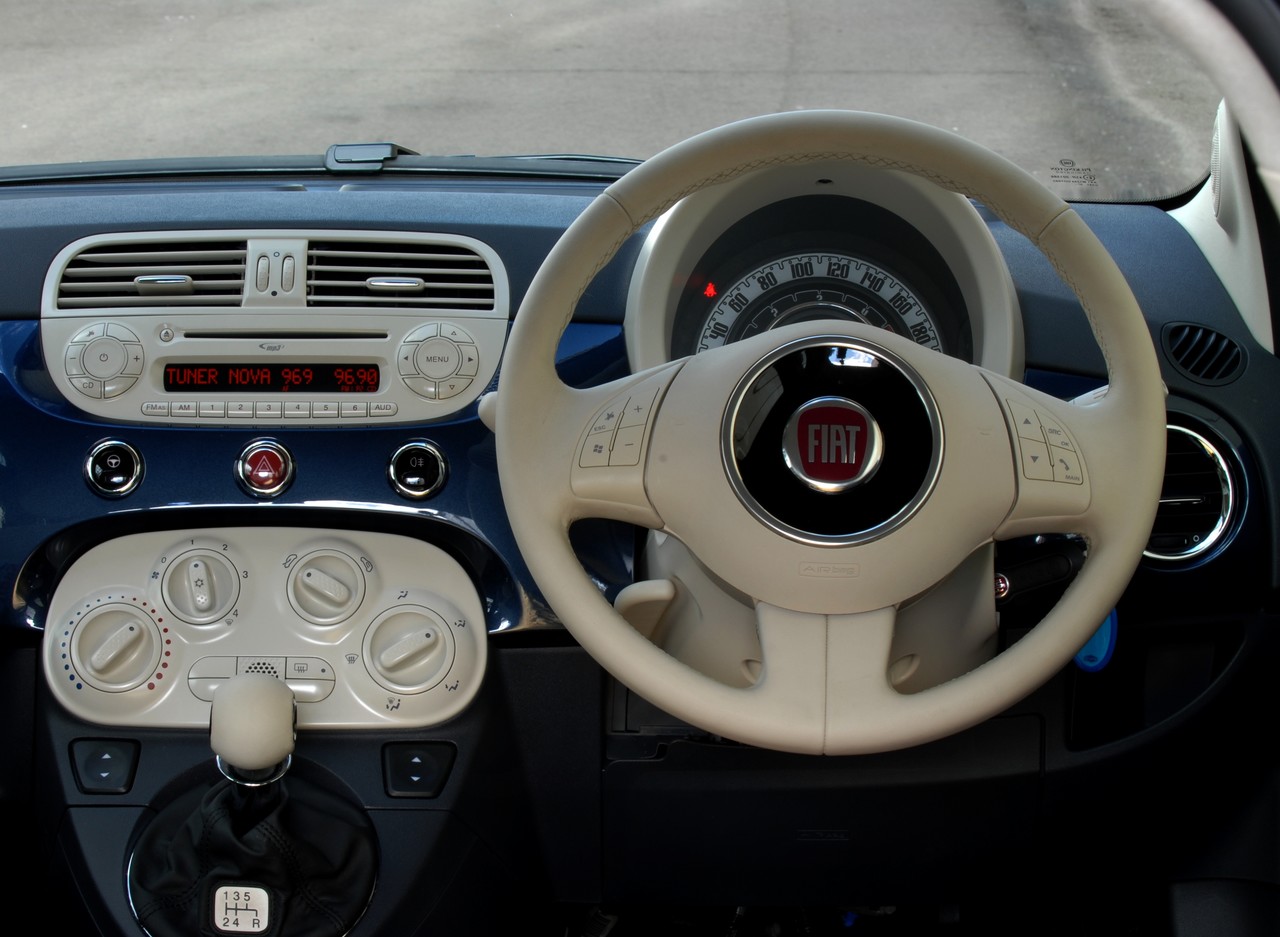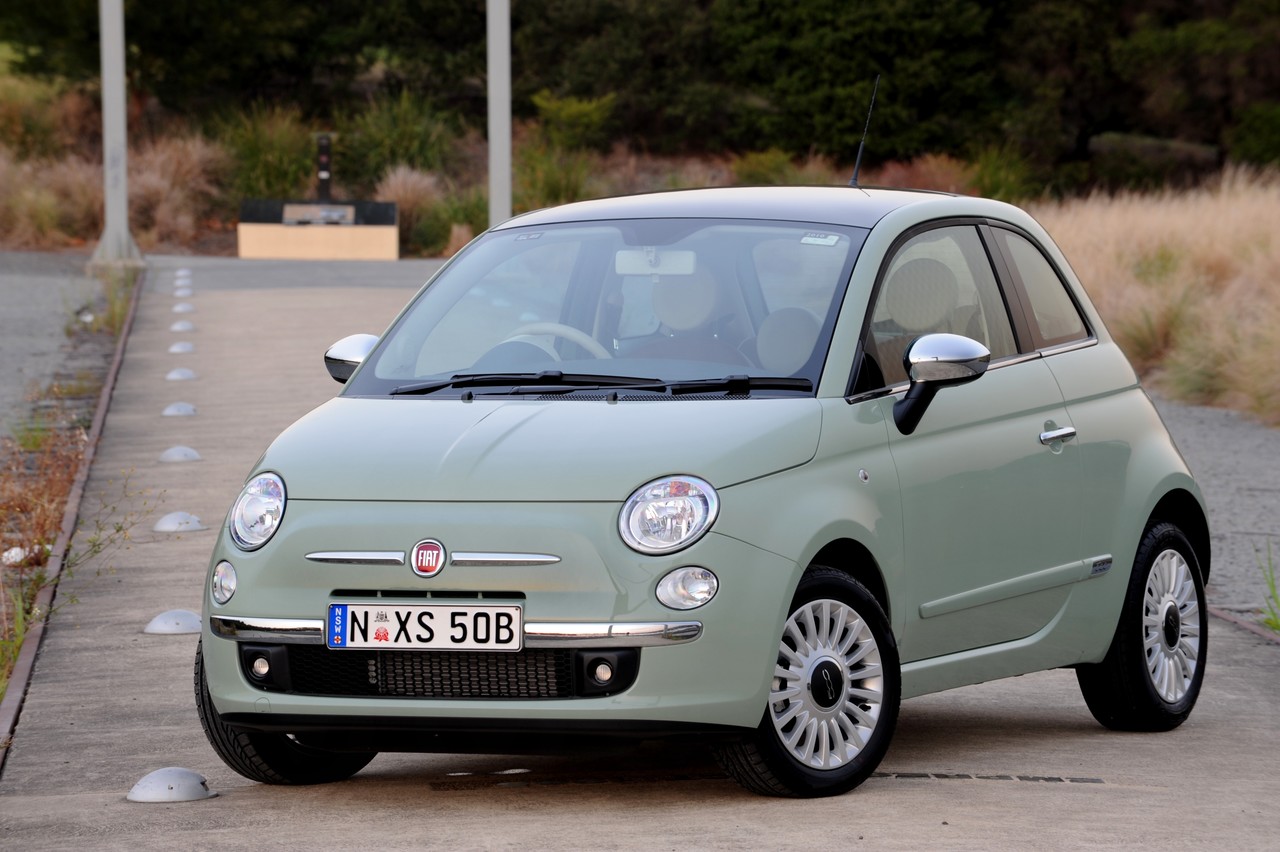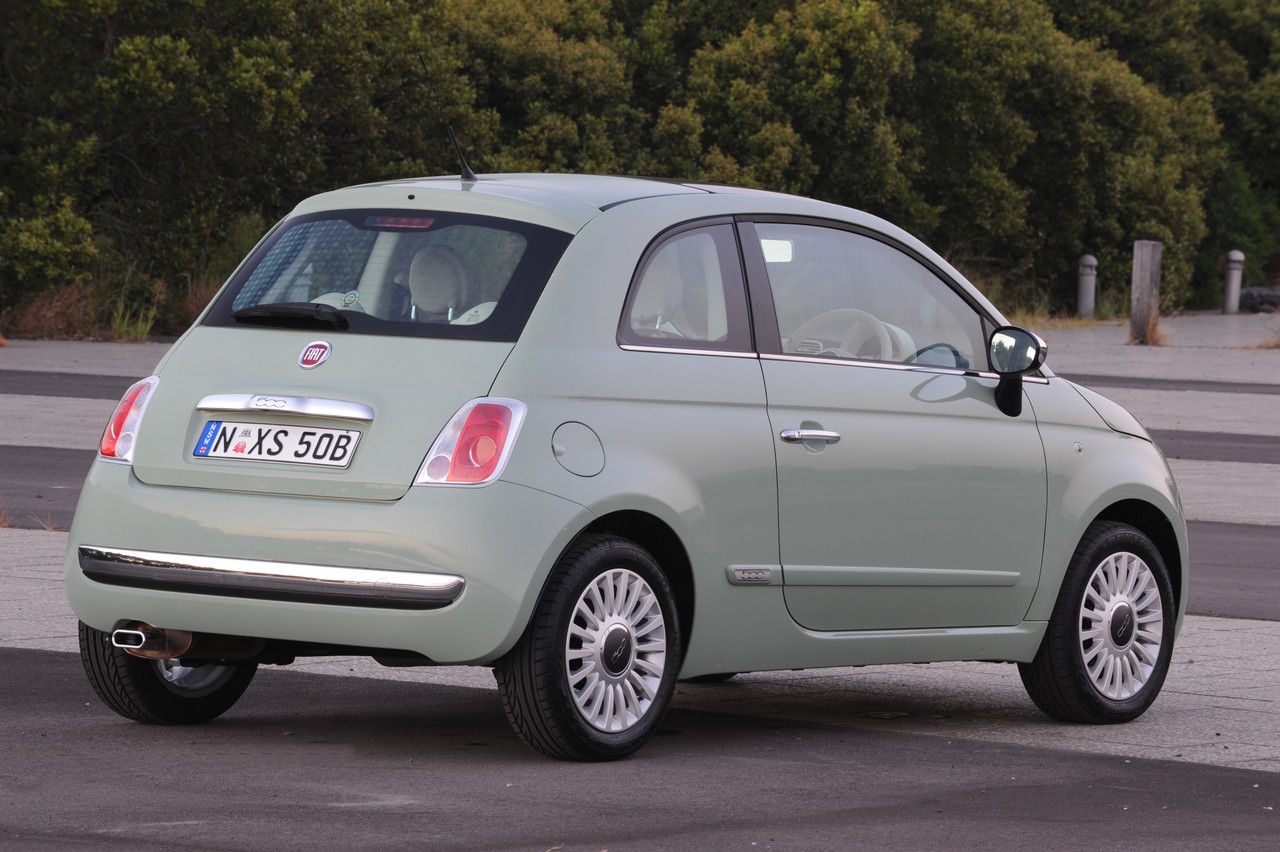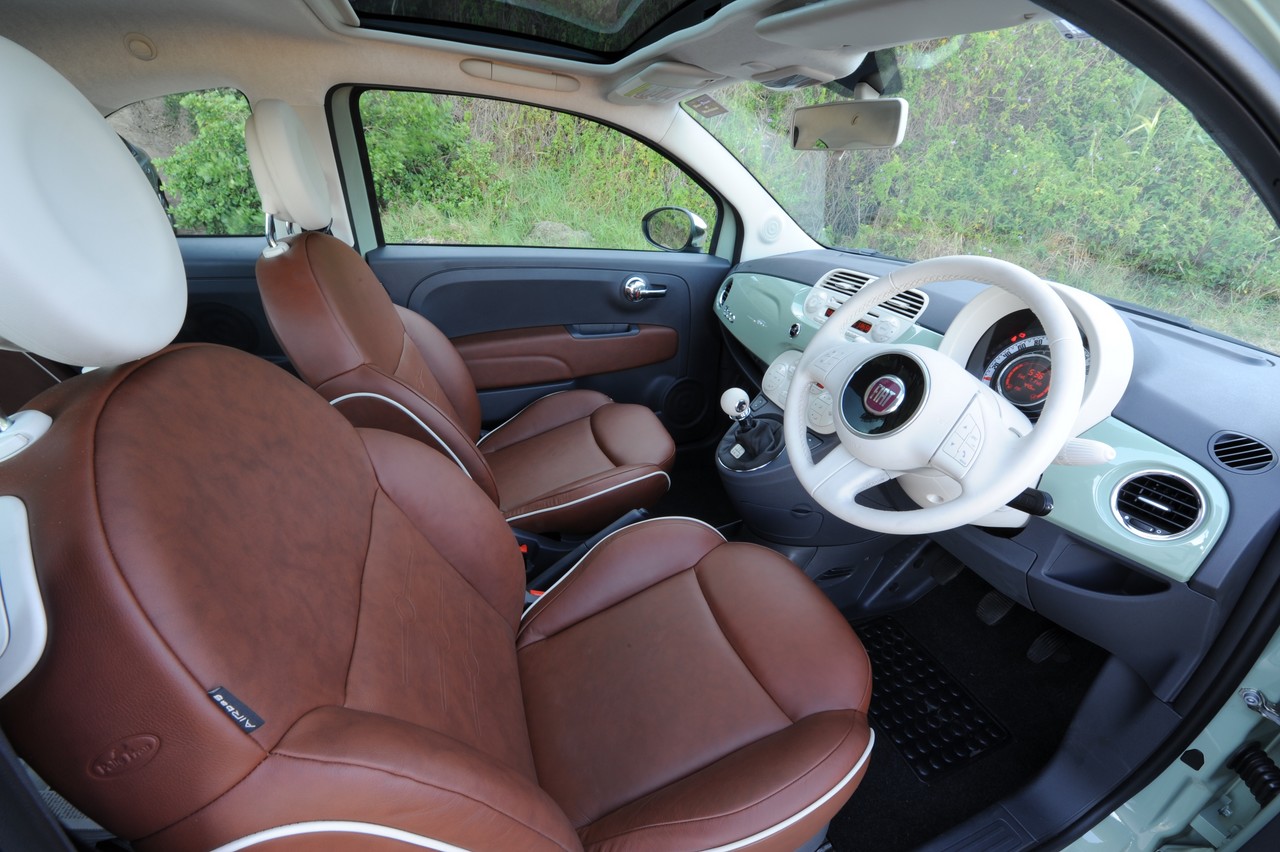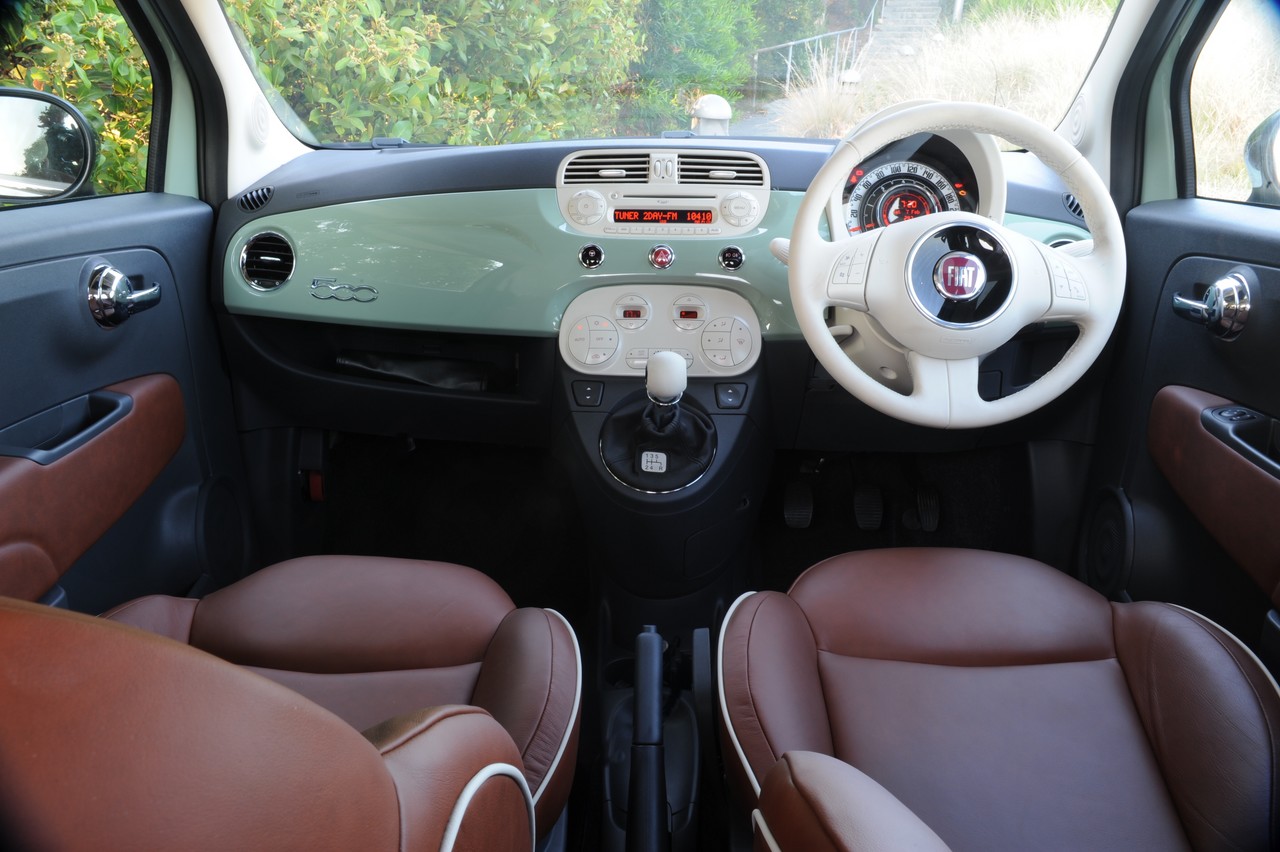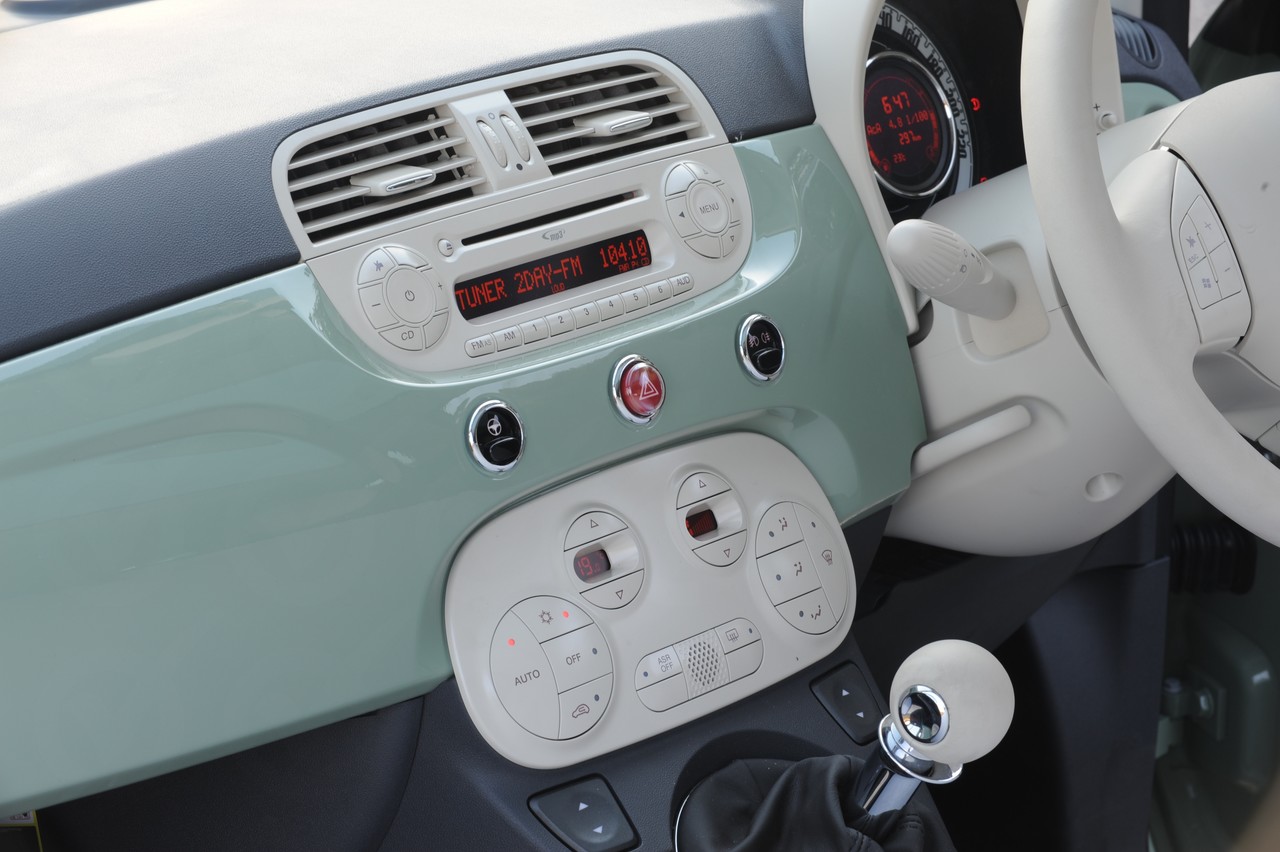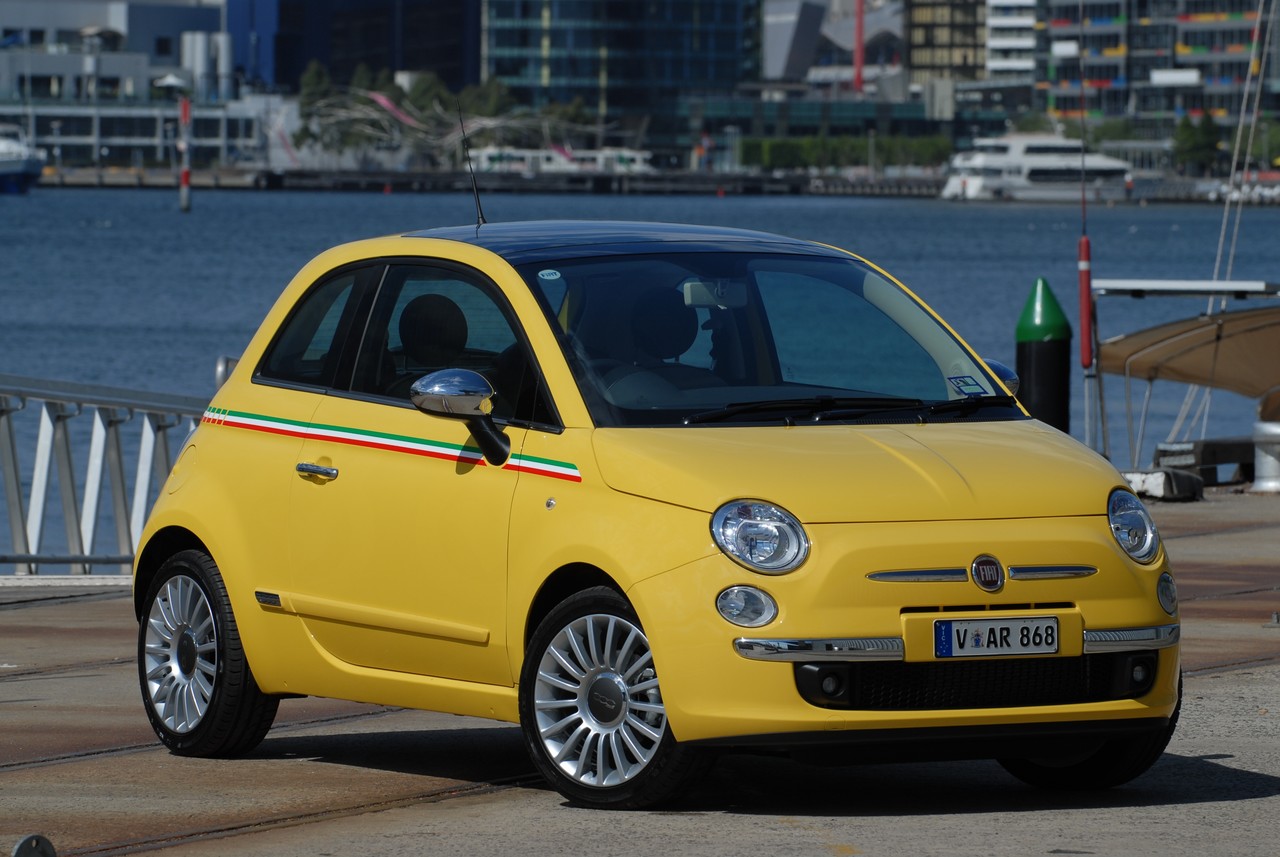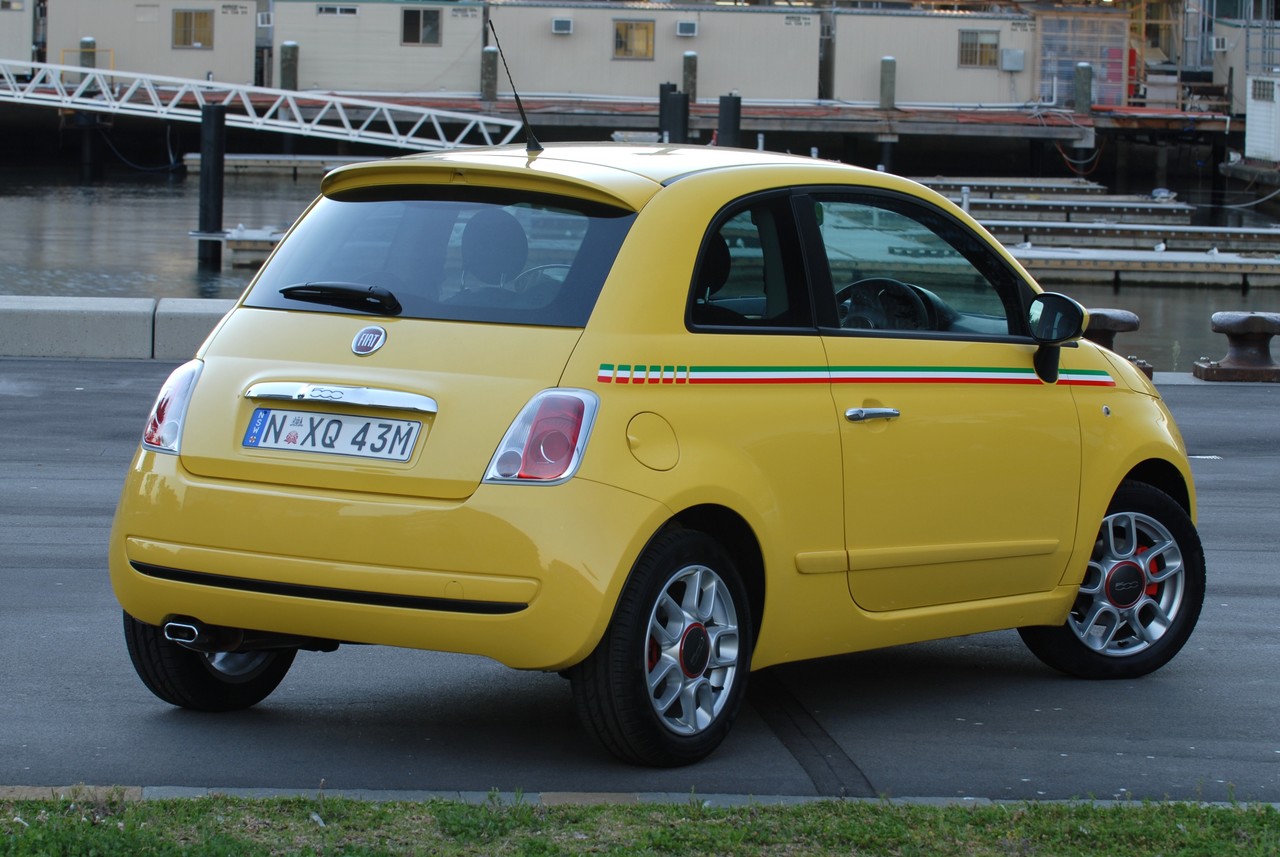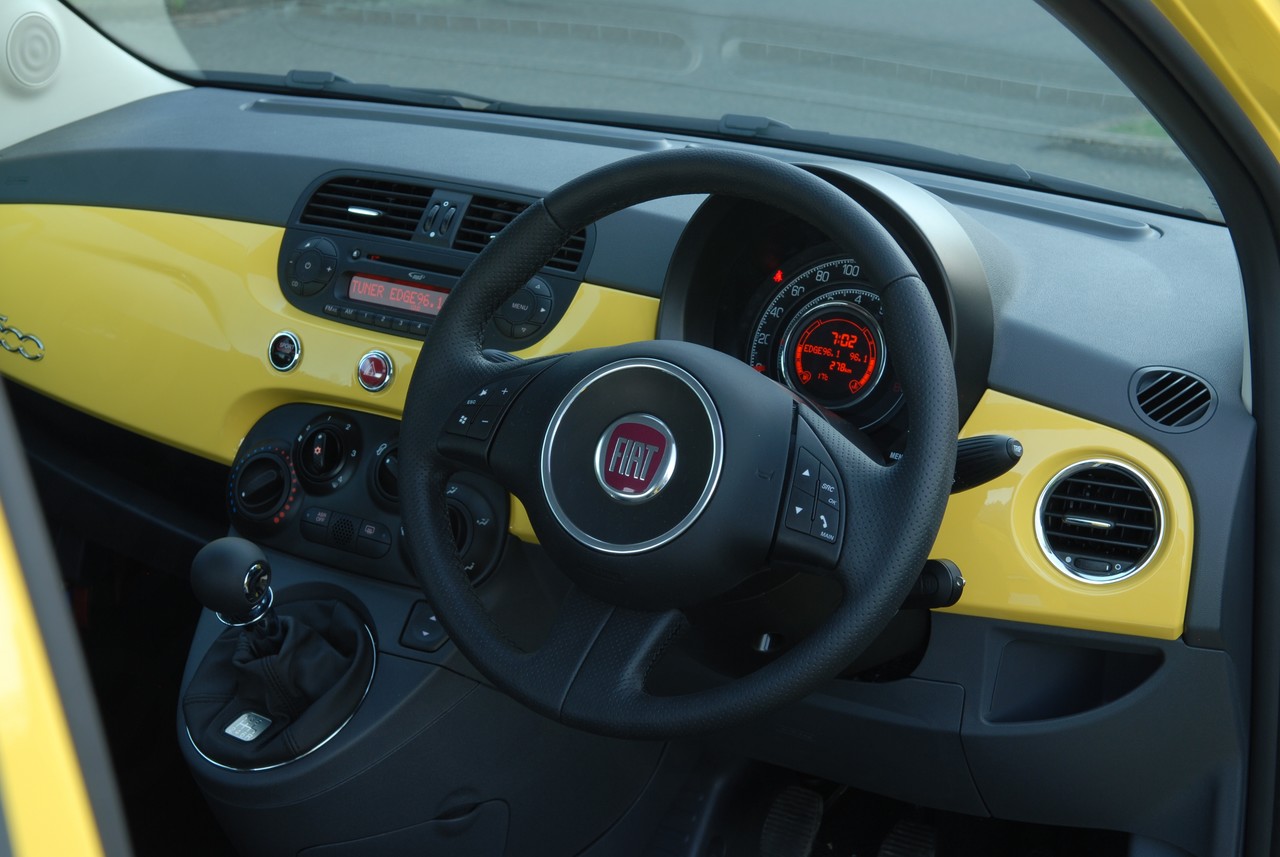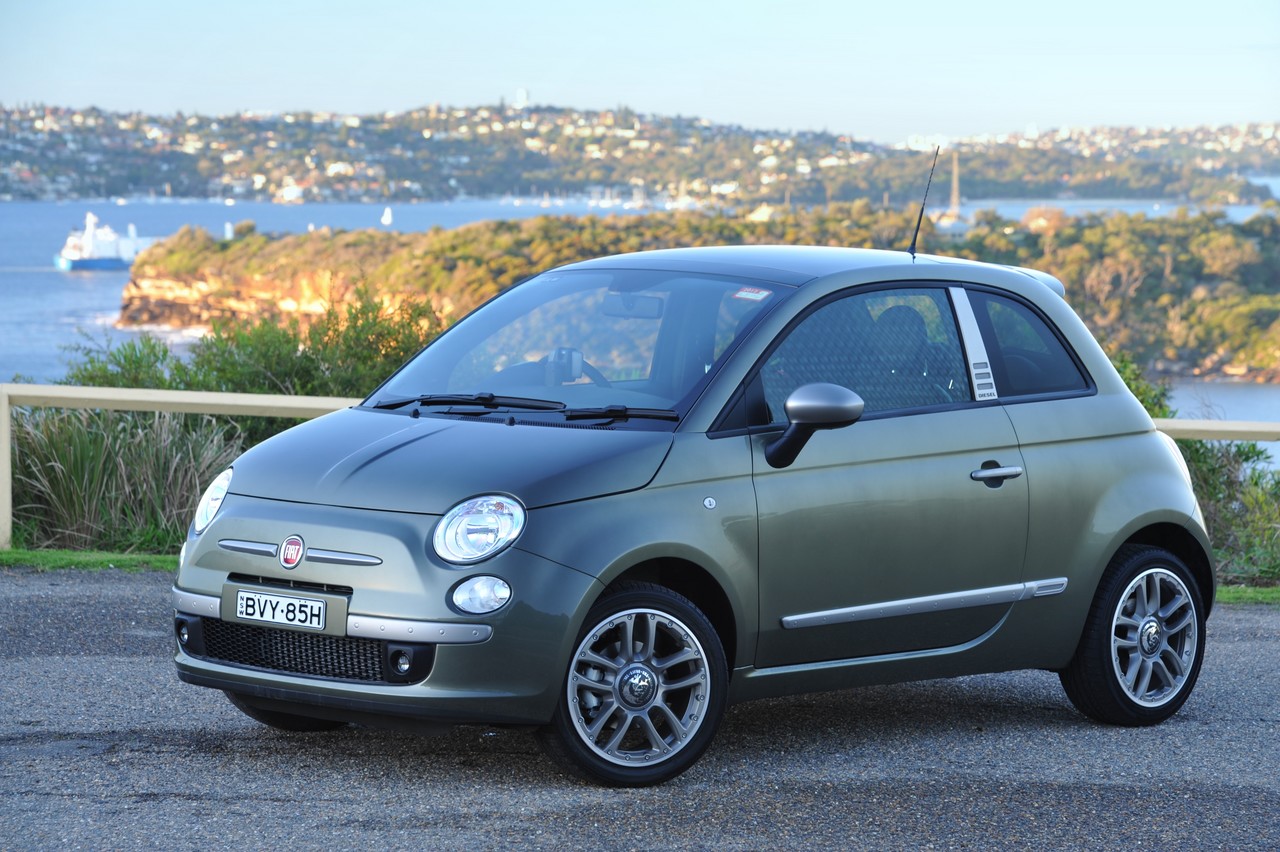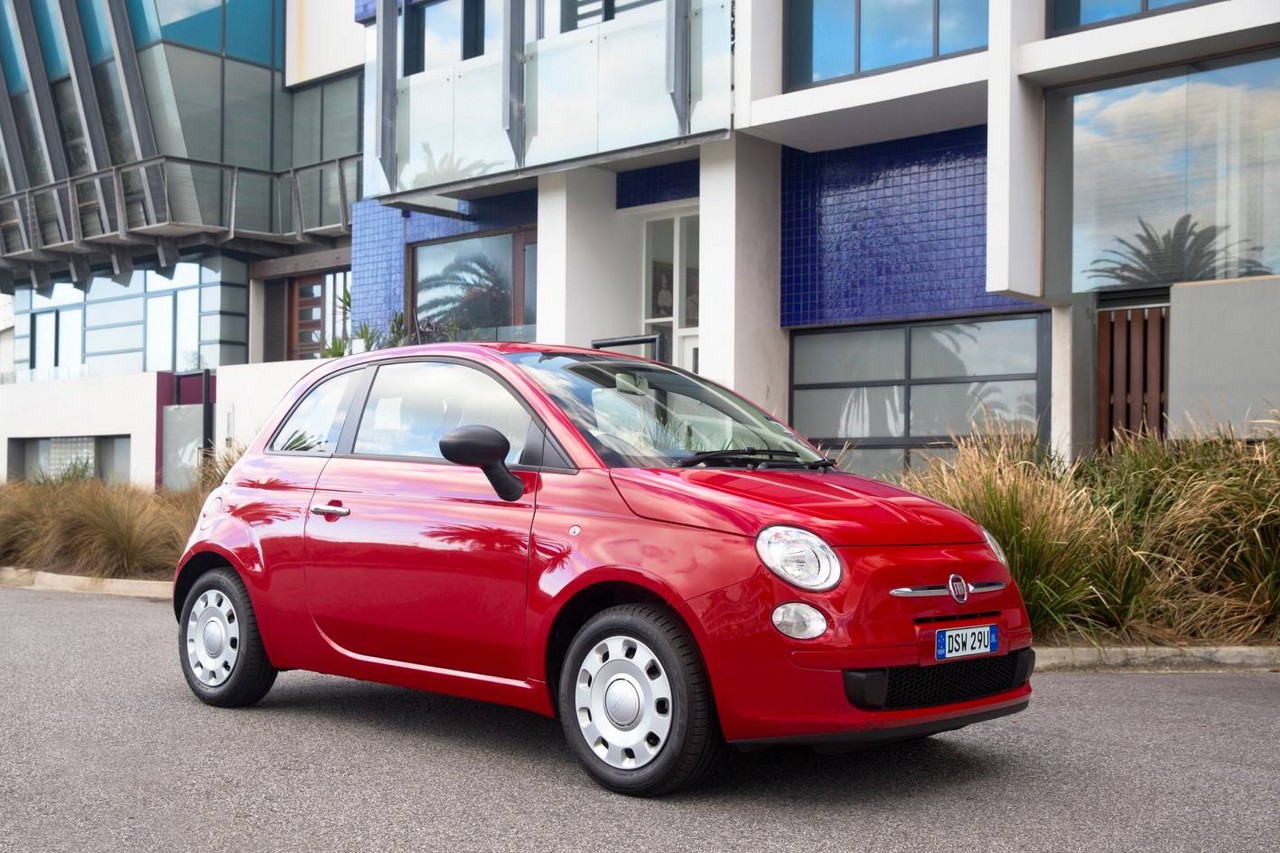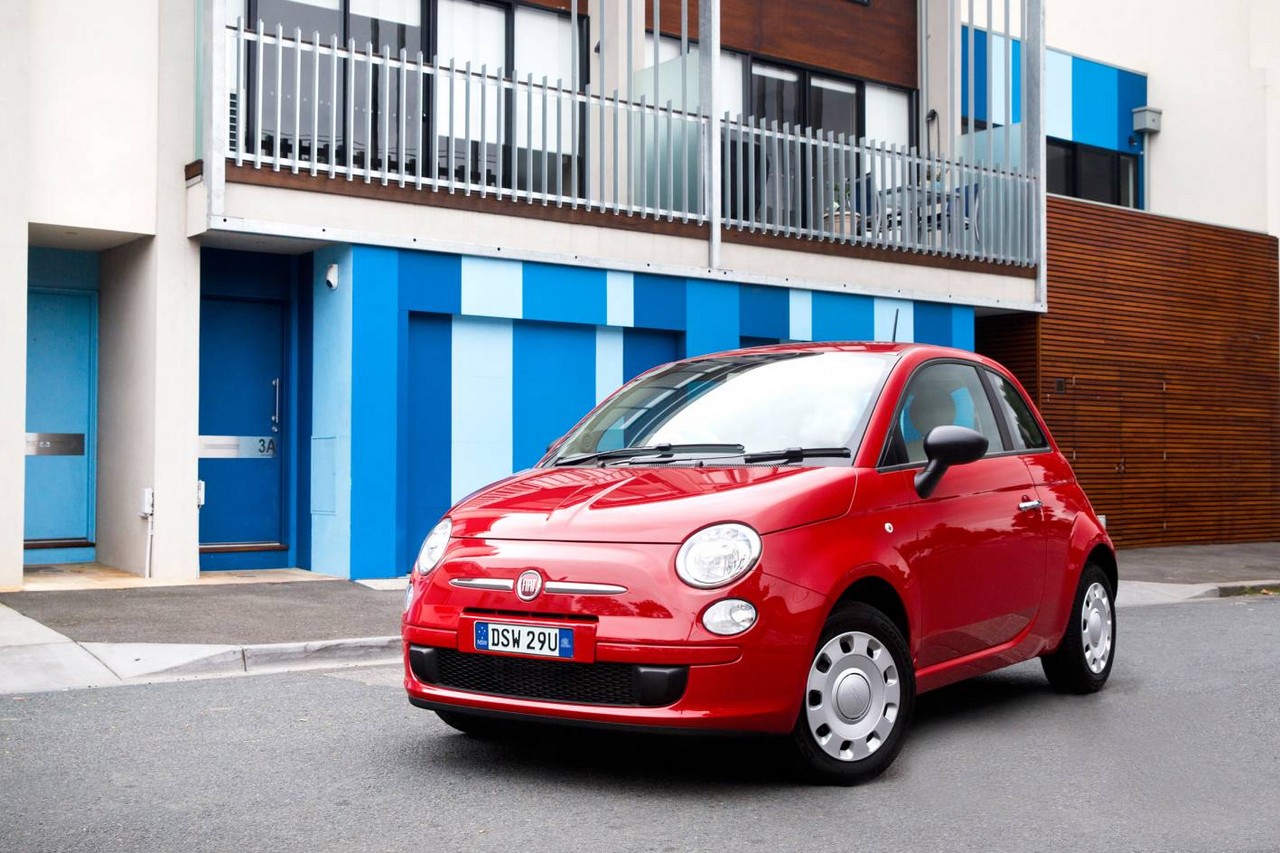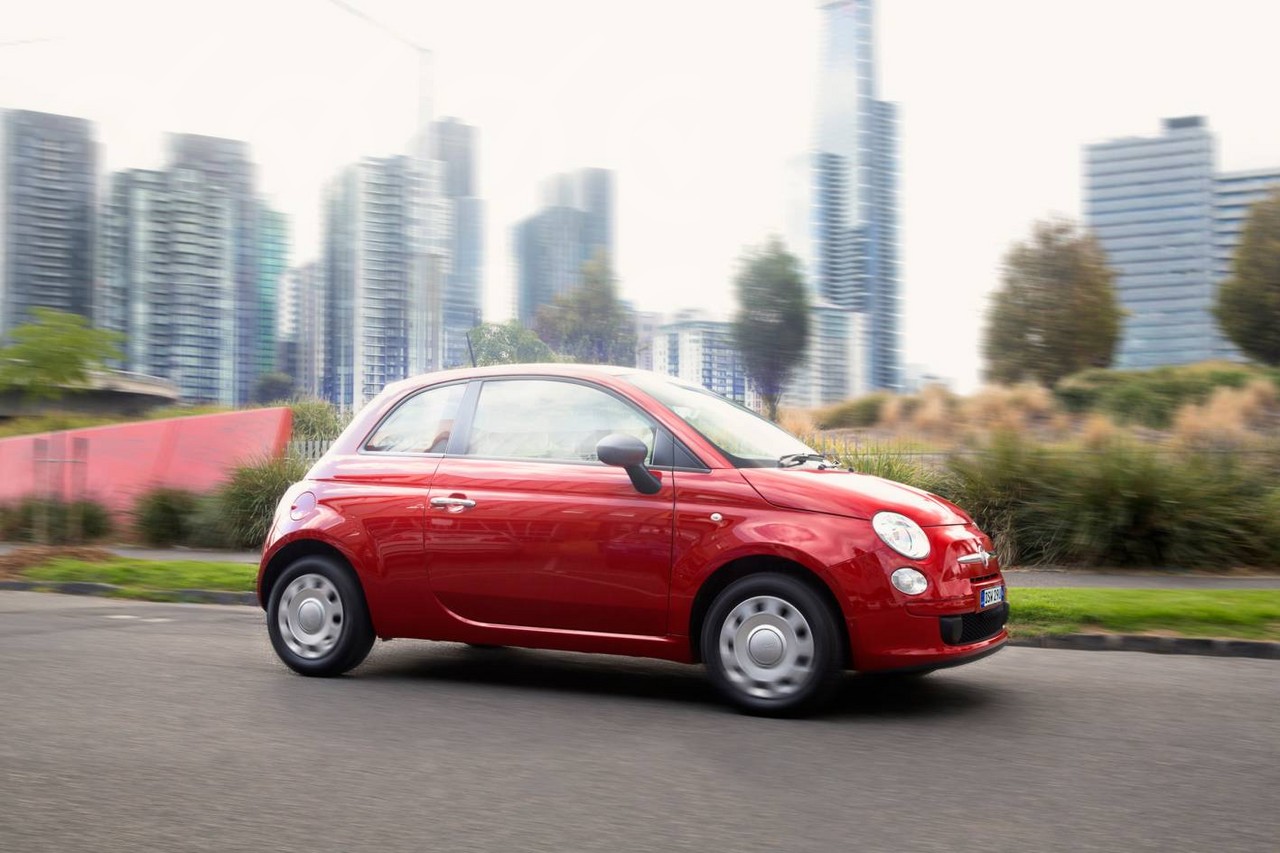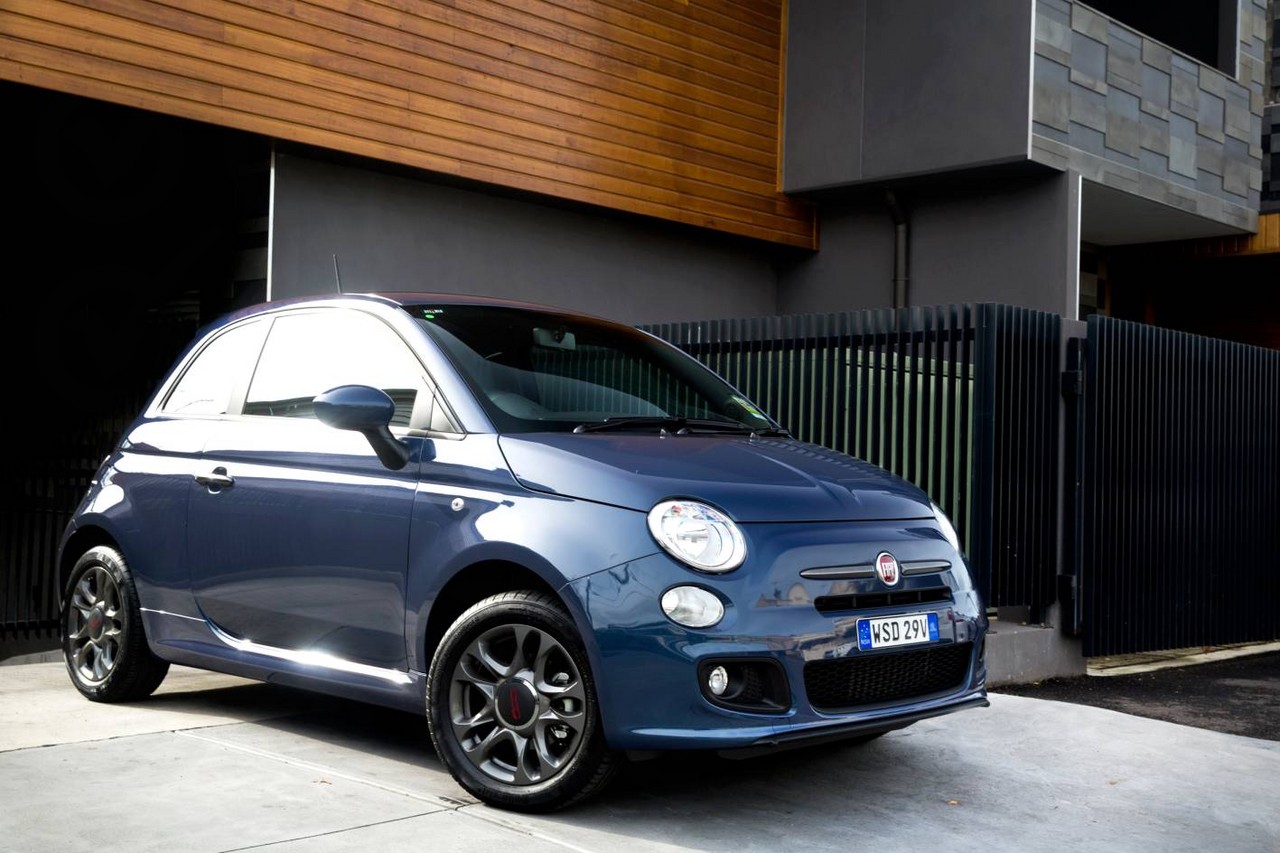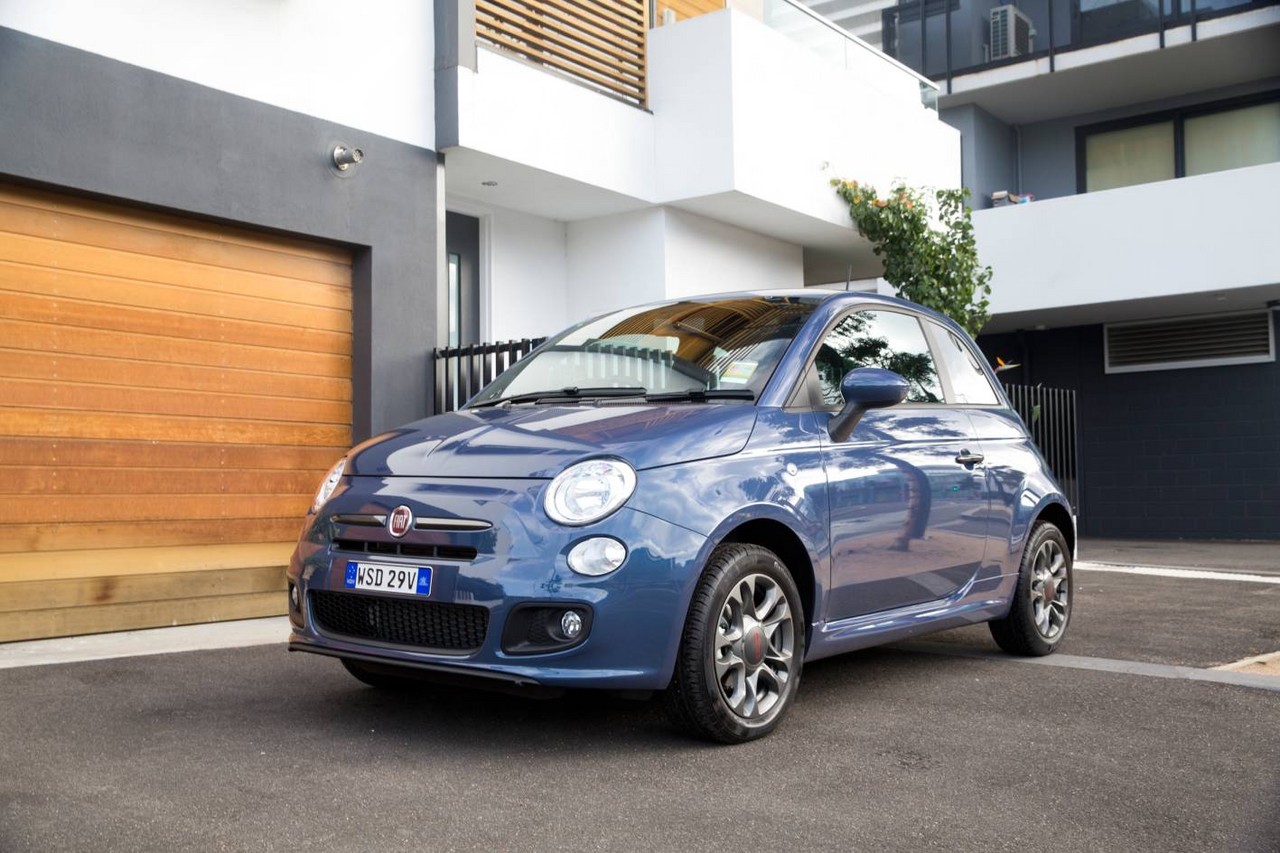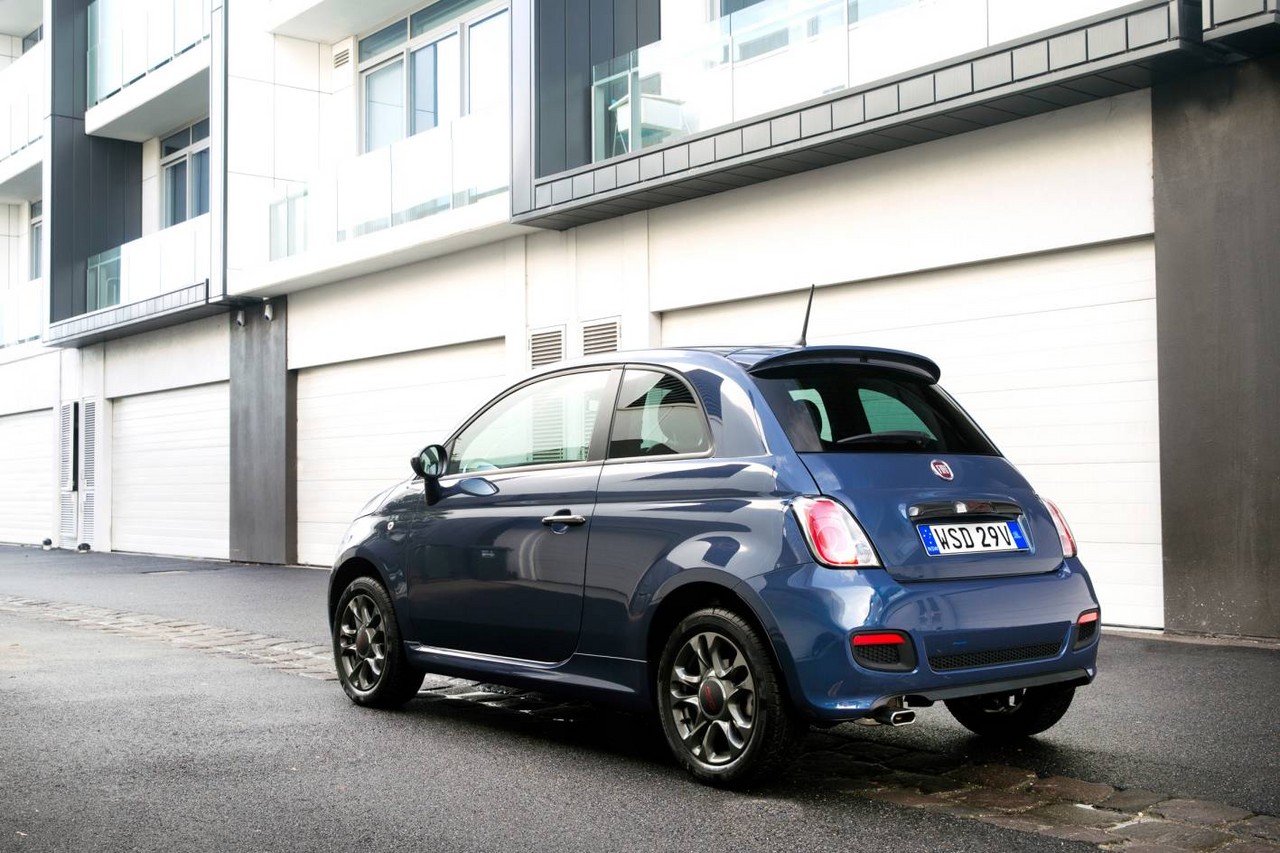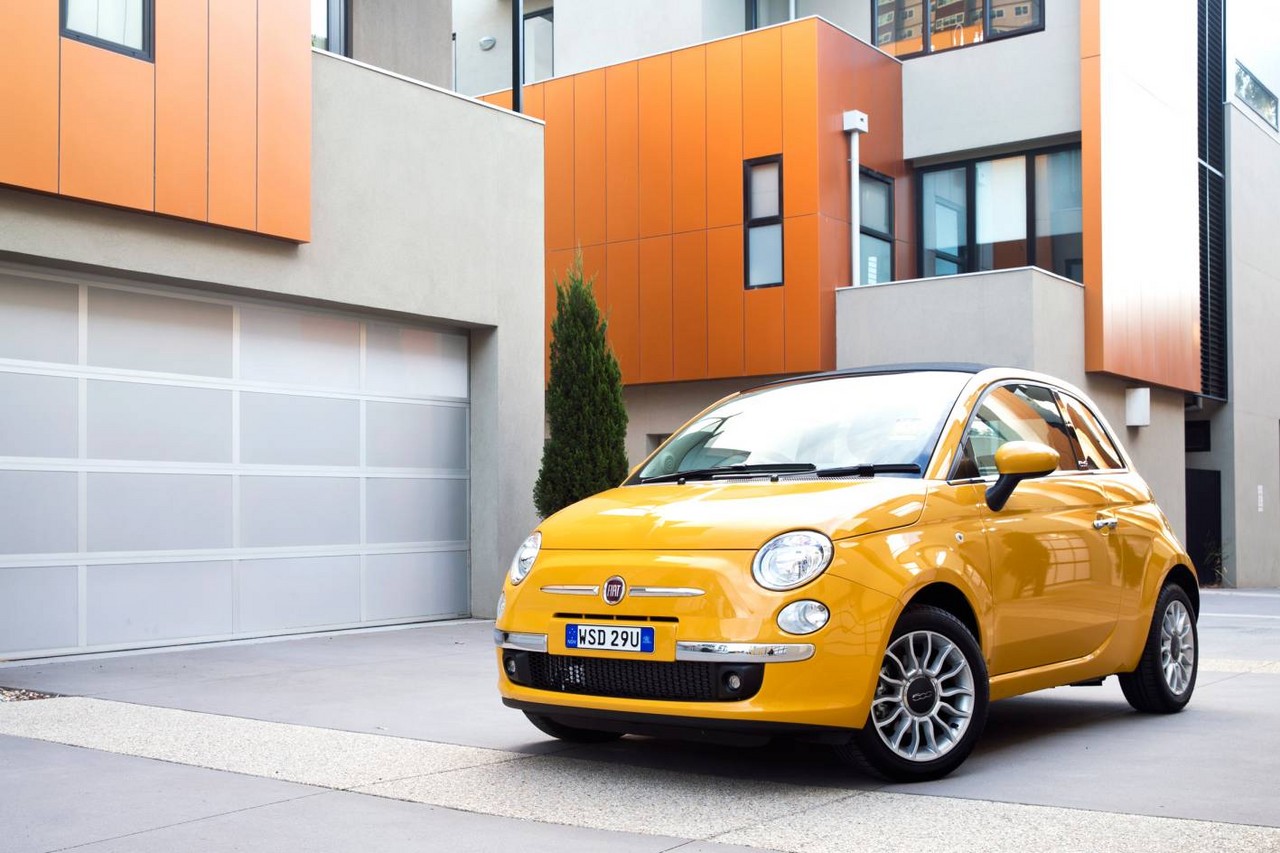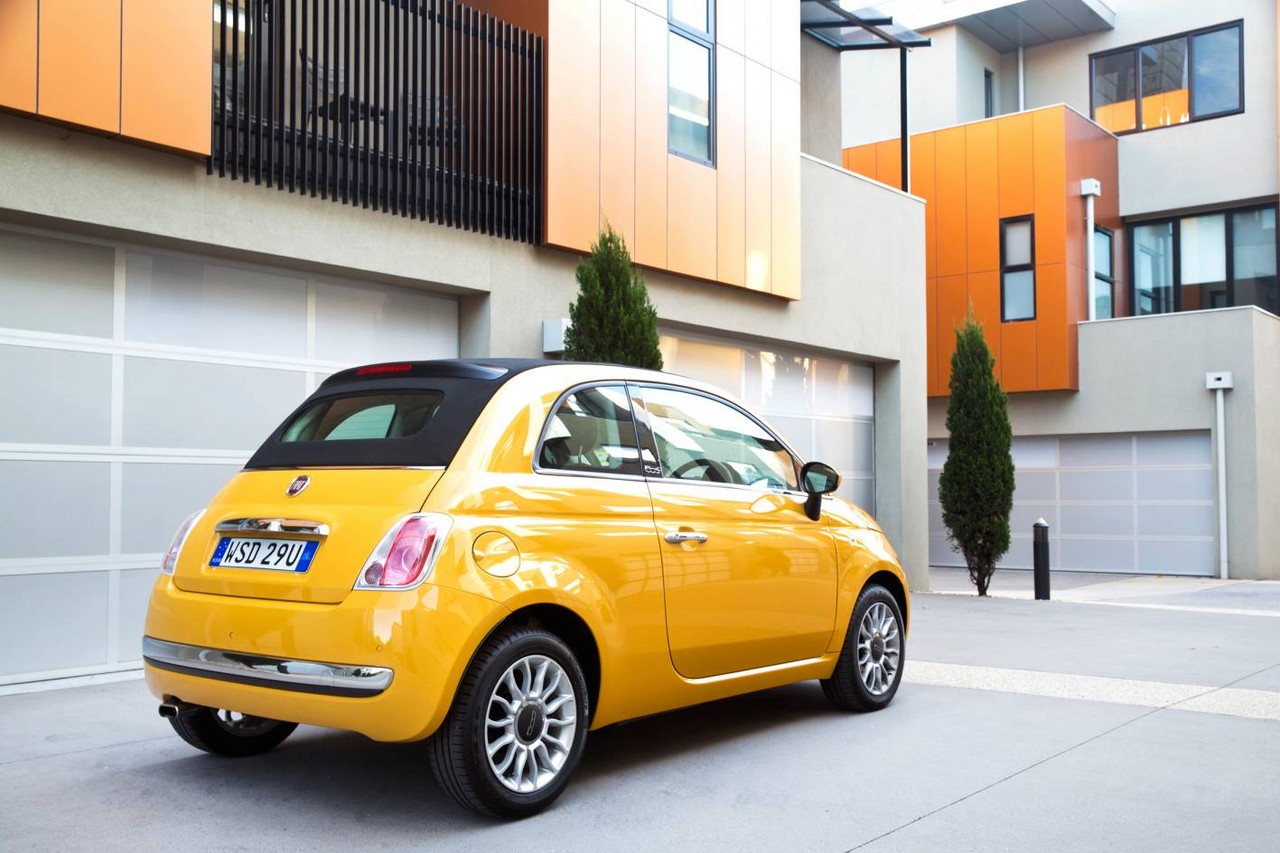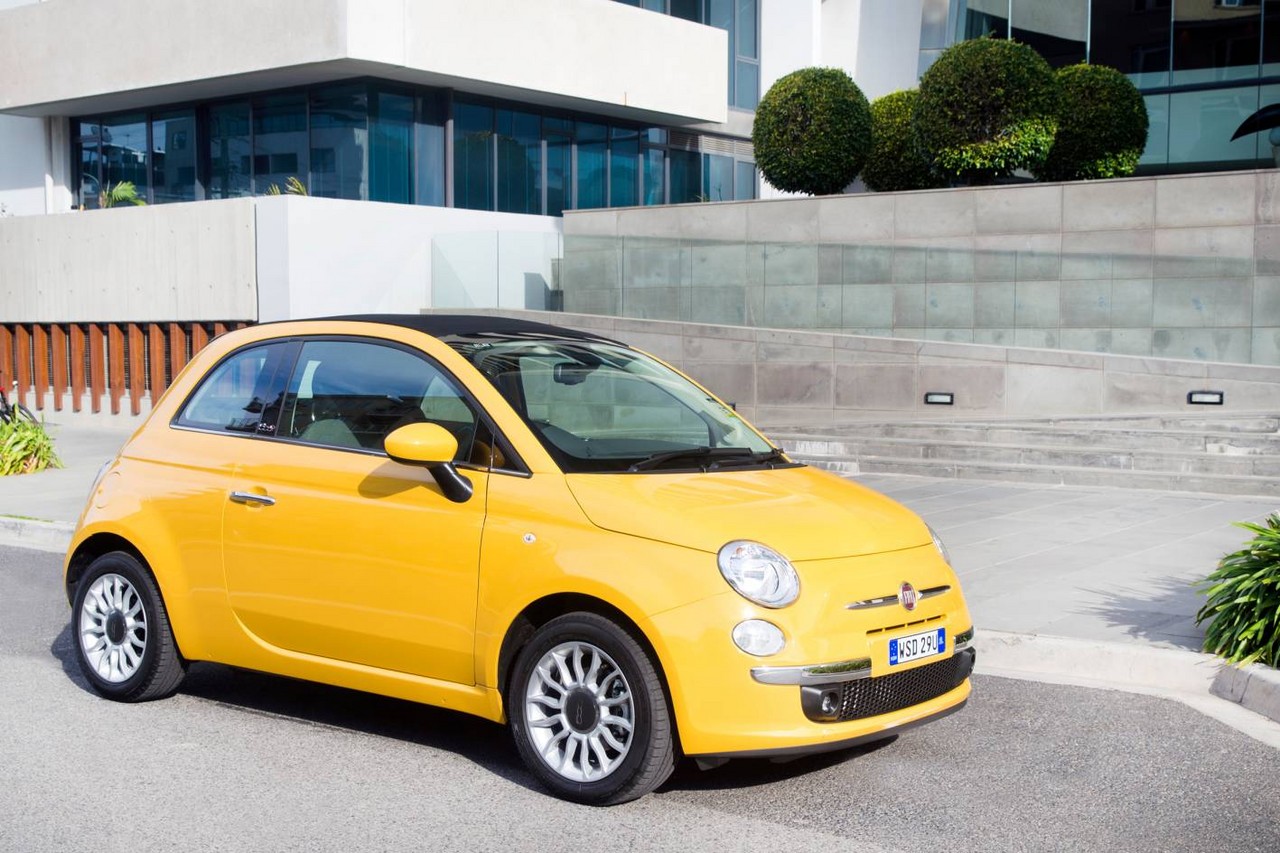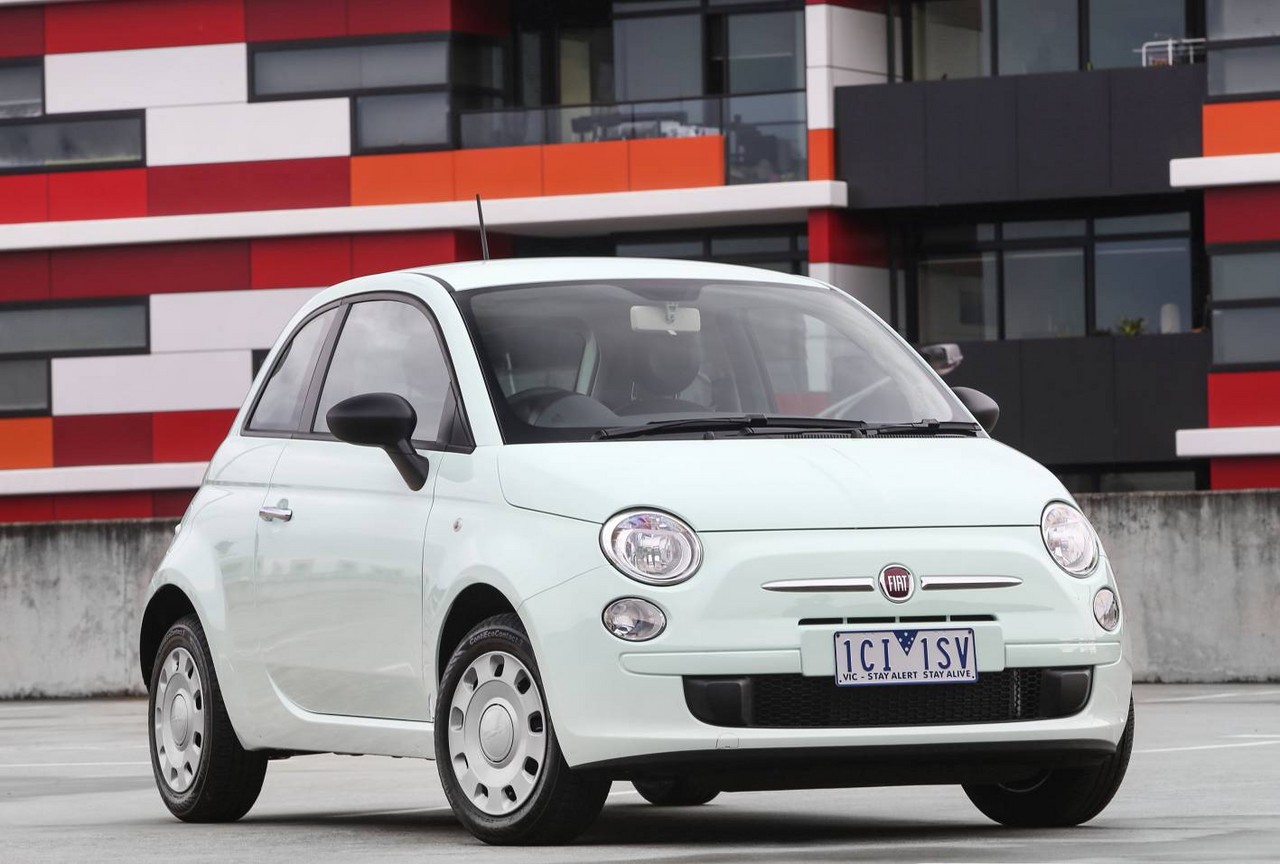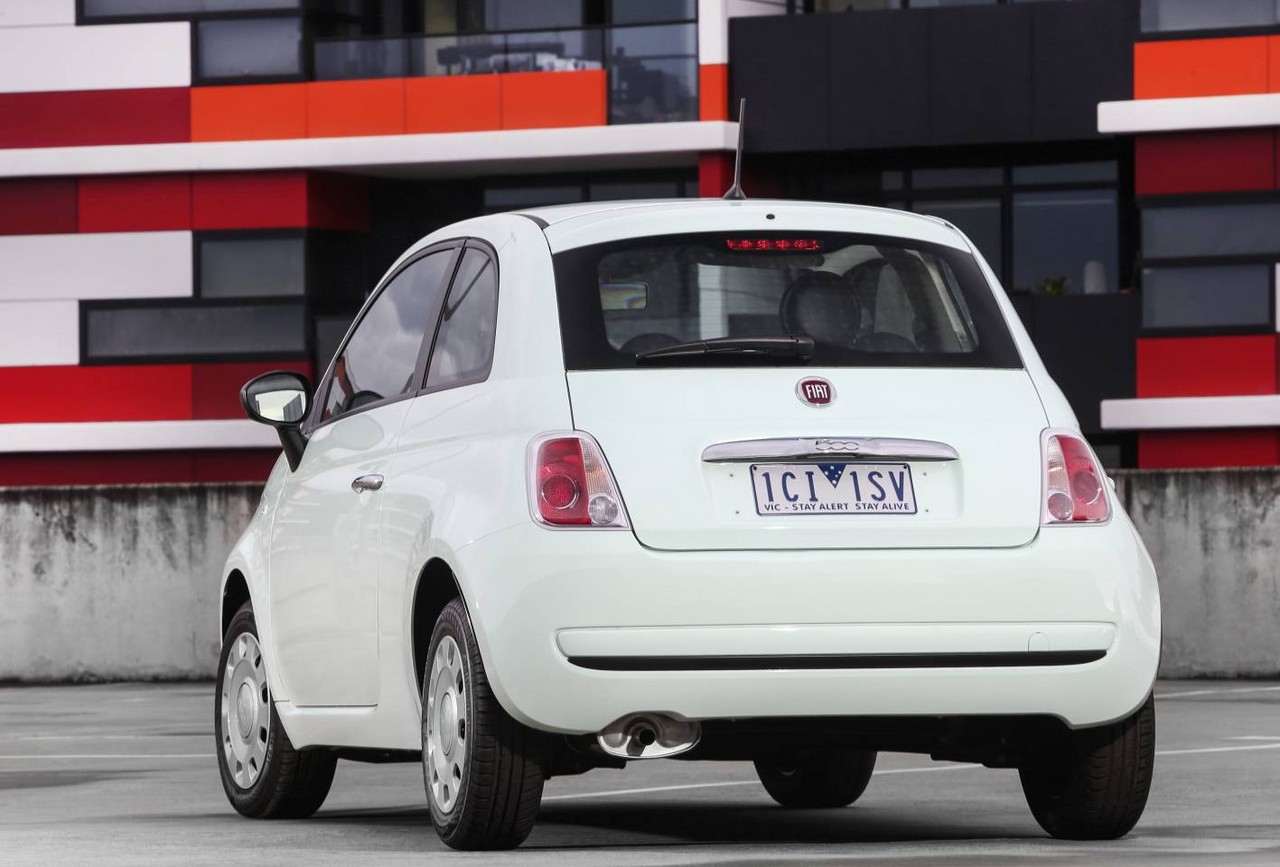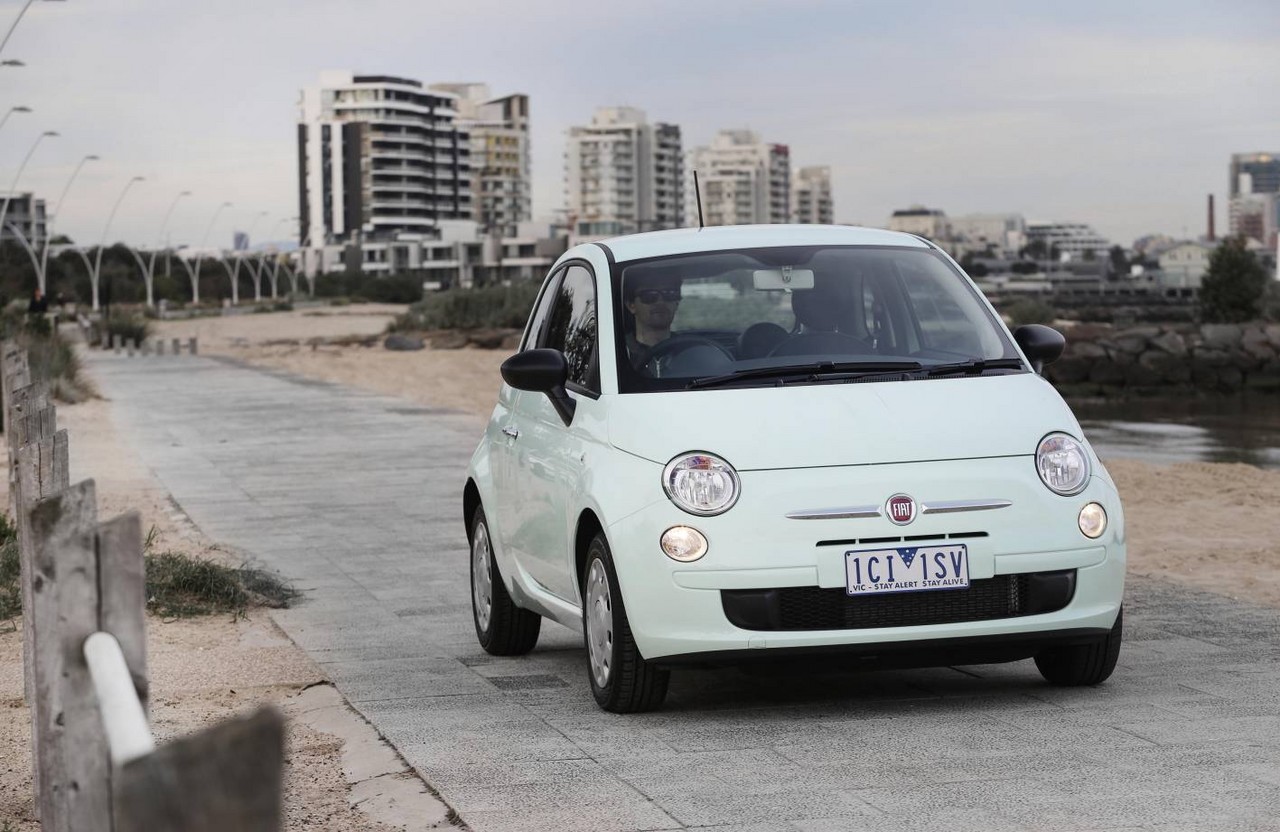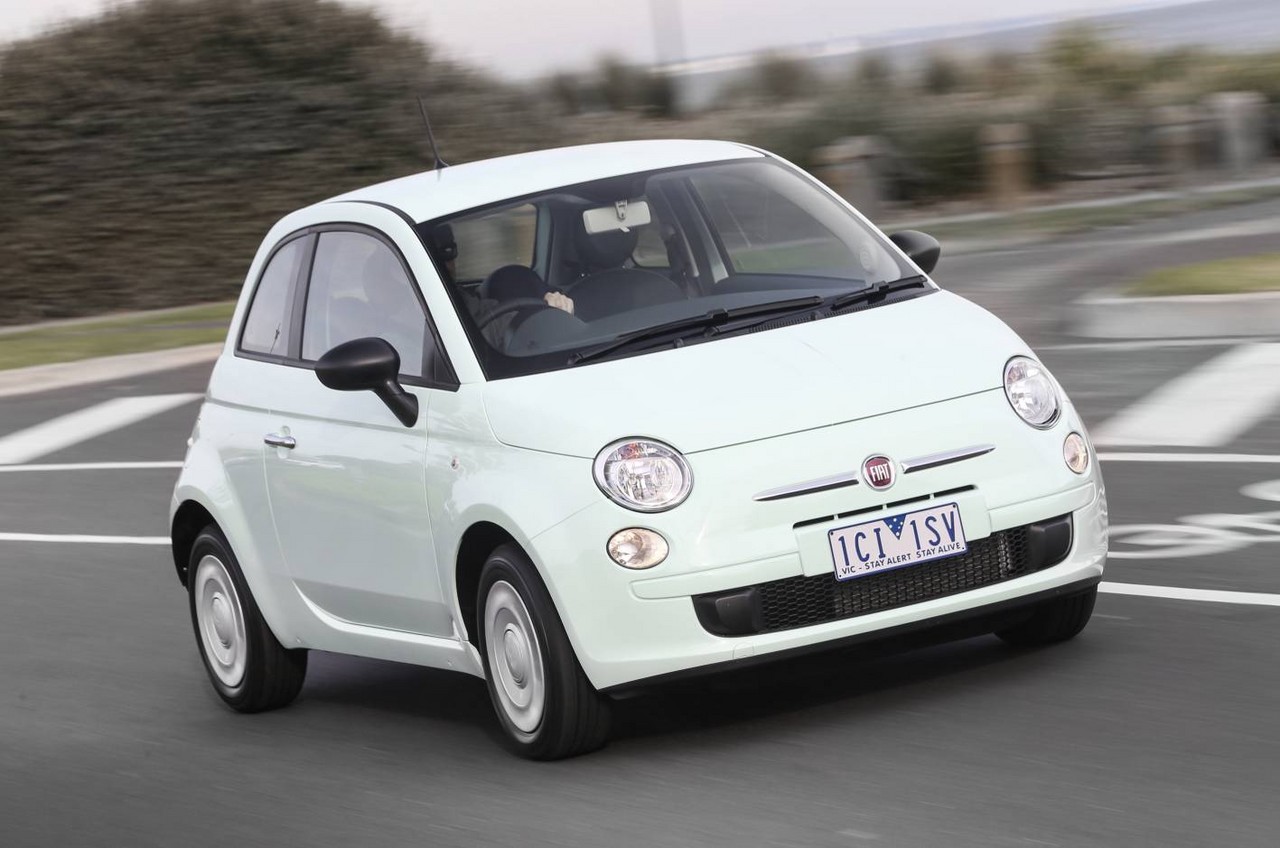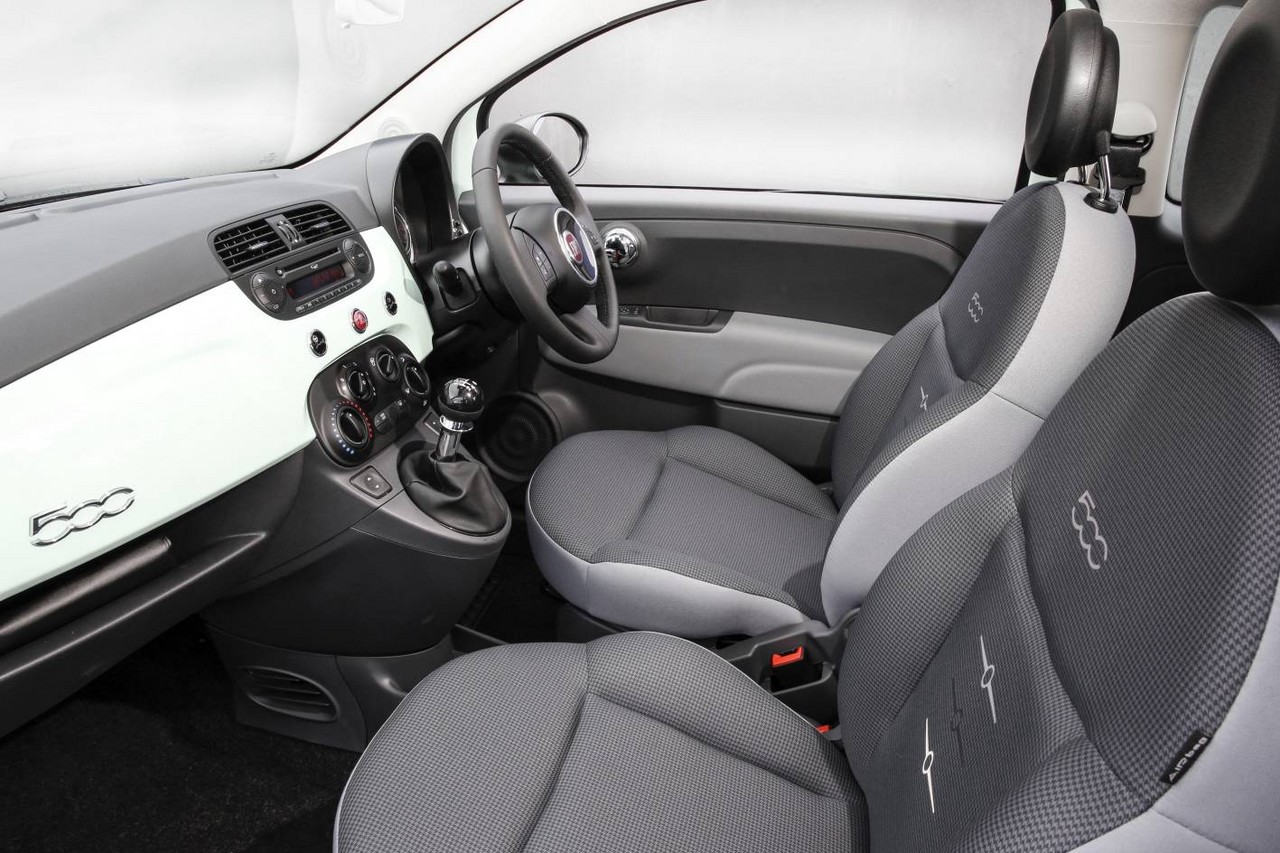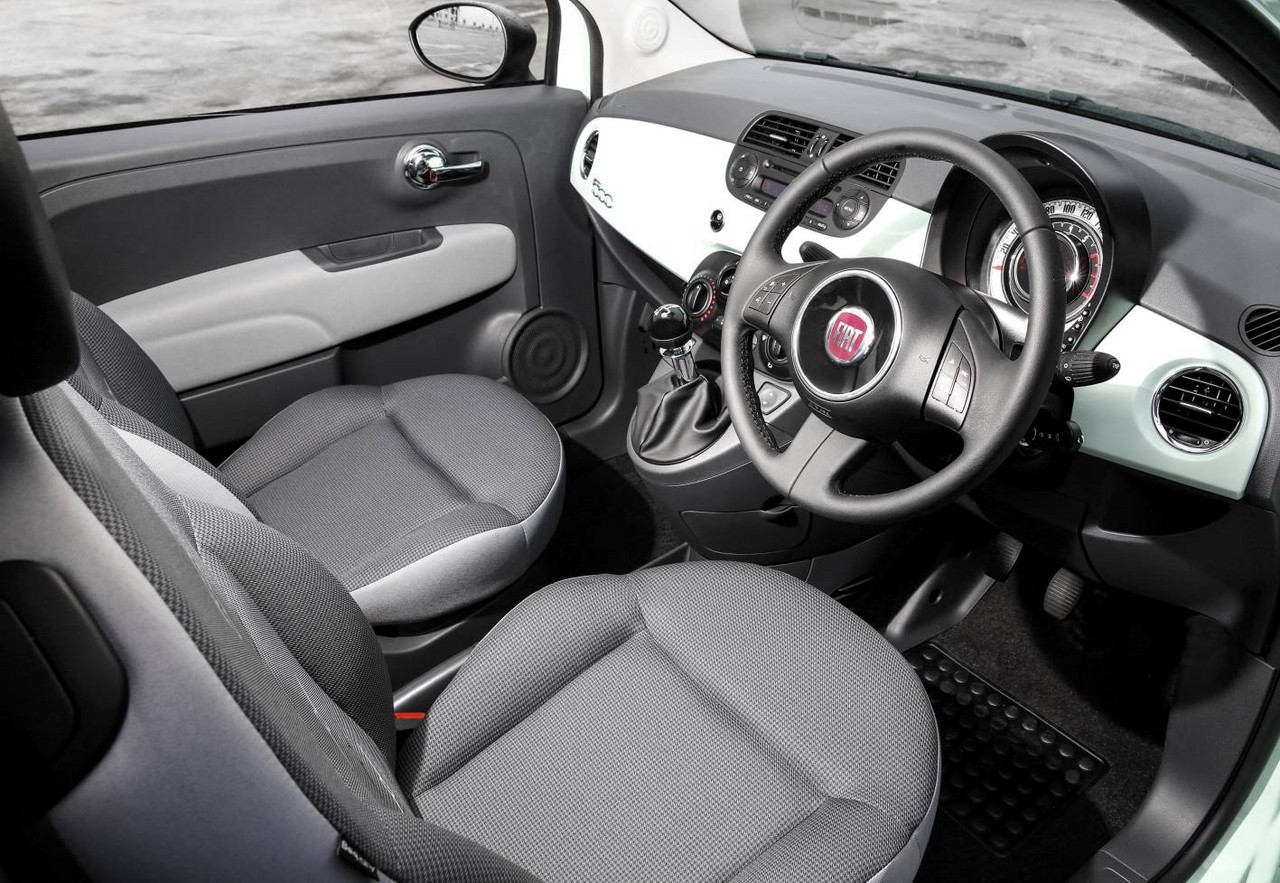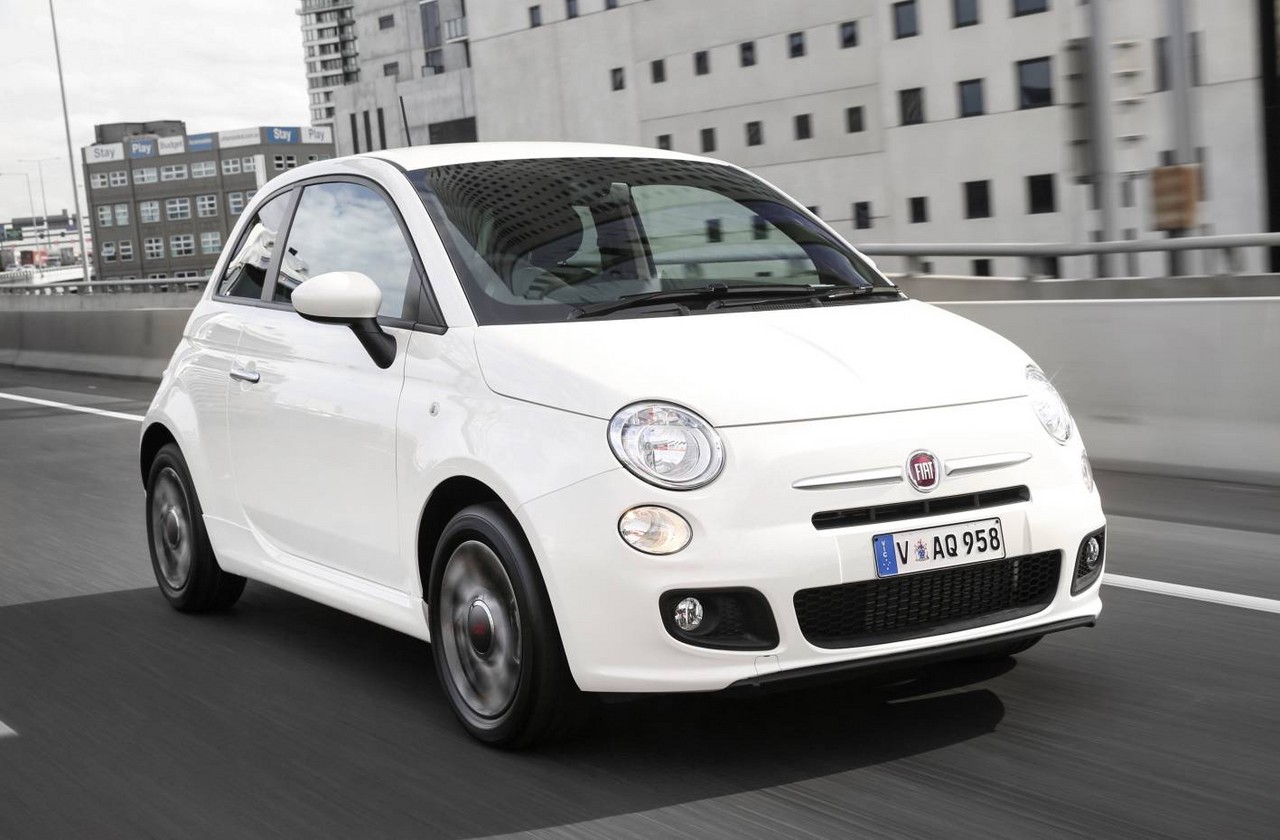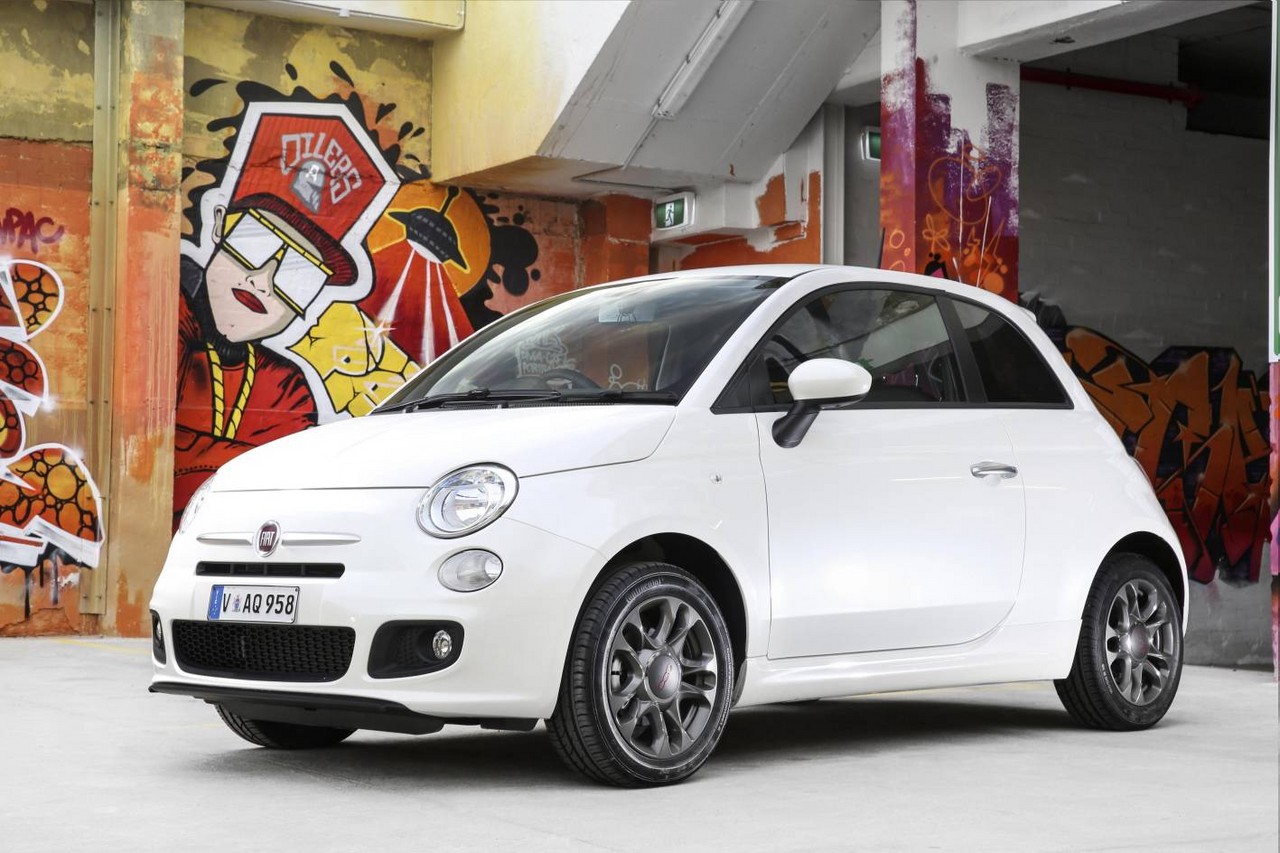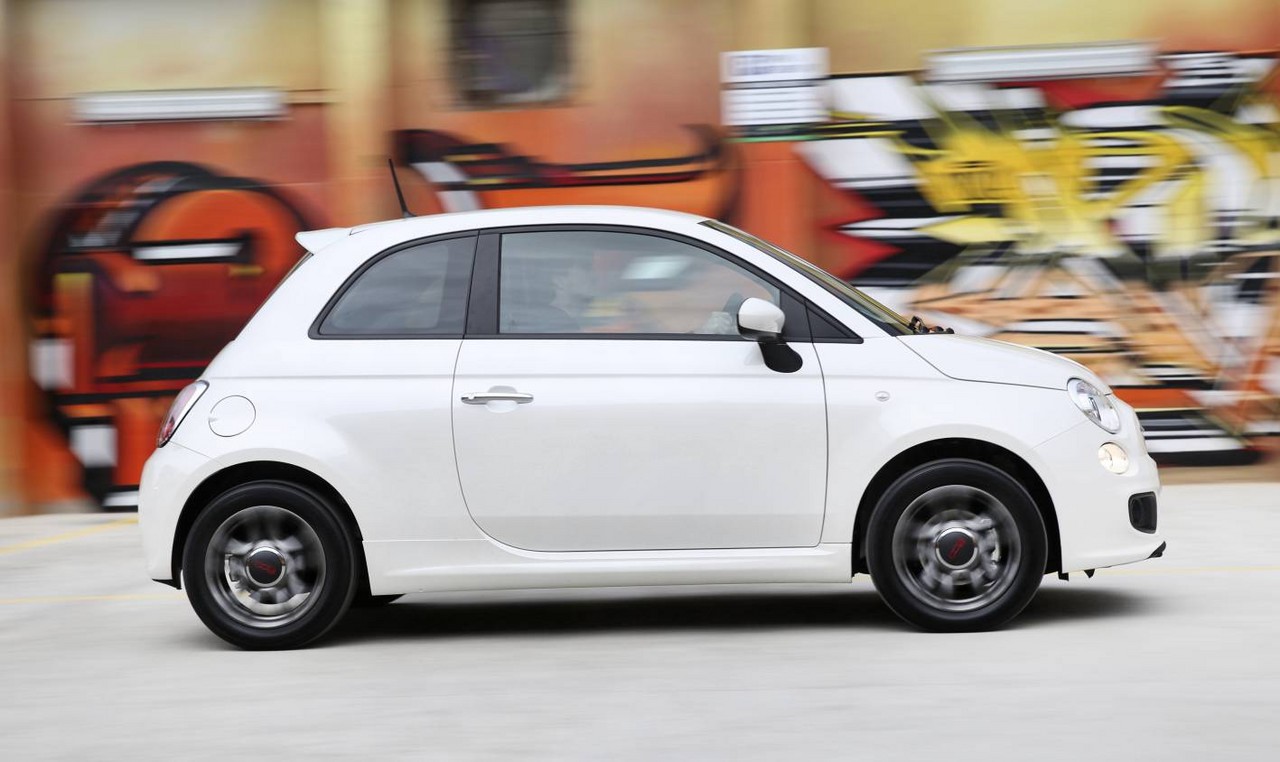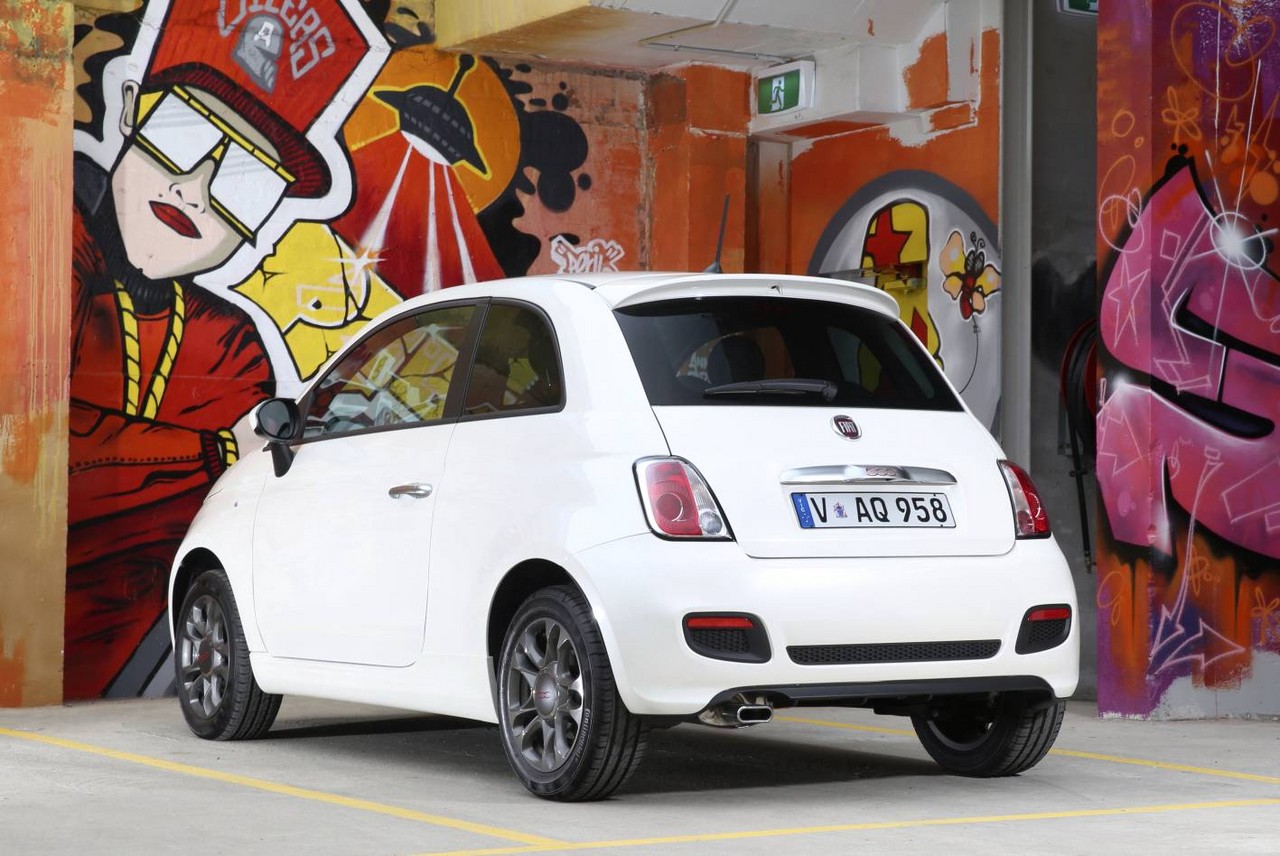
- Economical petrol engines
- Comfortable ride
- Cute styling
- Awkward, upright driving position
- Flat seats
- Semi-automatic transmission provides jerky gearshifts
Review: Fiat Series 1 500 (2008-13)
Overview
Released in March 2008, the Fiat Series 1 (S1) 500 was a light, three-door hatchback. Manufactured in Tychy, Poland, the front-wheel drive 500 was initially available with 1.2- and 1.4-litre petrol and 1.3-litre turbo-diesel engines. Beyond the engines, the Fiat 500 range consisted of Pop, Sport and Lounge variants.
In September 2010, the 500 range was reduced to a single, unnamed variant that was powered by the 1.4-litre petrol engine. In January 2012, however, the 1.4-litre petrol engine was discontinued and effectively replaced by an 875cc turbocharged two-cylinder petrol engine, Fiat’s ‘TwinAir’ unit, which had a Start&Stop function that enabled it to shut down when the vehicle was stationary in traffic.
The Fiat 500 was 3546 mm long, 1627 mm wide, 1488 mm tall and had a 2300 mm long wheelbase. Furthermore, the Fiat 500 had MacPherson strut front suspension and a torsion beam rear axle.
| Engine | Variant | Years | Trans. | Peak power | Peak torque |
|---|---|---|---|---|---|
| 1.2-litre petrol I4 | Pop | 2008-10 | 5sp man., 5sp semi-auto |
51 kW at 5500 rpm | 102 Nm at 3000 rpm |
| 1.3-litre turbo- diesel I4 |
Pop | 2008-10 | 5sp man. | 55 kW at 4000 rpm | 145 Nm at 1500 rpm |
| Lounge | 2008-10 | 6sp man. | |||
| 1.4-litre petrol I4 | Pop | 2008-10 | 6sp man., 5sp semi-auto |
74 kW at 6000 rpm | 131 Nm at 4250 rpm |
| Sport | 2008-10 | ||||
| Lounge | 2008-10 | ||||
| N/A | 2010-12 | ||||
| By Diesel | 2011 | ||||
| 875cc turbo petrol I2 |
TwinAir | 2012-13 | 5sp man., 5sp semi-auto |
62.5 kW at 5500 rpm | 145 Nm at 1900 rpm |
Safety equipment
Standard safety equipment included dual front airbags, driver’s knee airbag, front-side airbags, full-length curtain airbags, ABS, electronic brake force distribution, front seatbelt pretensioners and load limiters, and anti-submarining front seats. The Lounge and TwinAir variants as well as models with 1.4-litre engines were also fitted with electronic stability control, traction control and brake assist.
Euro NCAP crash testing
In Euro NCAP crash testing , a 500 fitted with a 1.2-litre engine received a five star adult occupant protection rating with a score of 34.91 out of 37. In the offset crash test, there was a slight risk of serious chest and leg injury for the front occupants. In the side impact test, there was a slight risk of serious chest injury for the driver. This result, however, preceded ANCAP’s requirement that electronic stability control be fitted for a five star rating.
Features (pre-September 2010)
Standard features for the entry-level 500 Pop included a six speaker sound system with CD player and MP3-compatibility, air conditioning, 50/50 split and folding rear seats, remote central locking, power windows, a height adjustable steering wheel, trip computer and an immobiliser.
The 500 Sport was further equipped with 15-inch alloy wheels, auxiliary sound system inputs (MP3/USB/iPod), Bluetooth connectivity, a leather-wrapped steering wheel and gearshift, rear privacy glass and a roof-mounted rear spoiler.
Beyond this, the 500 Lounge added climate control air conditioning, a height adjustable driver’s seat and a panoramic glass roof with sunblind.
Features (post-September 2010)
Compared to the entry-level Pop variant, standard features for the post-September 2010 Fiat 500 also included auxiliary sound system inputs (MP3/USB/iPod), climate control air conditioning, front fog lights, Bluetooth connectivity, a leather-wrapped steering wheel with audio controls and rear privacy glass.
The Twin Air variants were distinguished by their 16-inch matt black wheels, metallic-effect dashboard, piano-black roof and spoiler and satin-chrome finish for the door mirrors, door handles and bootlid trim. Inside, there were contoured sports seats.
2011 Fiat 500 By Diesel
In June 2011, a limited-run ‘By Diesel’ variant was released. Produced in collaboration with fashion brand Diesel, the ‘By Diesel’ variant could be identified by its 16-inch split-rim style alloy wheels with Diesel centre caps, denim seat upholstery, satin silver-coloured B-pillar panels, silver-coloured body protection mouldings, flared door mirrors, faux rear air vents and exclusive Diesel Green or Indigo Blue paint finishes.
Compared to the post-September 2010 Fiat 500, standard features for the By Diesel variant were extended to include a power-operated glass sunroof and TomTom portable satellite navigation unit.
2013 Foat 500 Rockstar
In 2013, limited-run Rockstar editions were released. Powered by the TwinAir engine, the Rockstar editions were fitted with an electrochromatic rear view mirror and could be identified by their chrome-plated tailpipes and rear spoilers.
Related links
- Press Kit: Fiat 500 (January 2008)
- Brochure: Fiat 500 and 500C (February 2010)
- Press Kit: Fiat 500 and 500C TwinAir (February 2012)
Review: Fiat Series 2 500 (2013-14)
Overview
Released in June 2013, the Fiat Series 2 (S2) 500 introduced a revised range and lower pricing. While the Pop and Sport variants were powered by Fiat’s 1.2- and 1.4-litre naturally aspirated ‘FIRE’ petrol engines, the range-topping Lounge was powered by the 875 cc turbocharged TwinAir engine.
The Series 2 500 introduced a ‘Dualdrive’ electric power steering system which included a ‘City’ mode – activated via a button on the fascia – which provided greater power assistance for low-speed manoeuvres. Inside, the Series 2 500 also featured Blue&Me, a Windows Mobile-based system developed between Fiat and Microsoft which included USB music playback and Bluetooth connectivity with voice recognition.
| Engine | Variant | Trans. | Peak power | Peak torque |
|---|---|---|---|---|
| 1.2-litre petrol I4 | Pop | 5sp man., 5sp semi-auto |
51 kW at 5500 rpm | 102 Nm at 3000 rpm |
| 1.4-litre petrol I4 | Sport | 6sp man., 5sp semi-auto |
74 kW at 6000 rpm | 131 Nm at 4250 rpm |
| 875cc turbo petrol I2 | Lounge | 5sp semi-auto | 63 kW at 5500 rpm | 145 Nm at 1900 rpm |
Safety equipment
Compared to its Series 1 predecessor, standard safety equipment for the Series 2 500 was unchanged.
Features
Standard features for the 500 Pop included 14-inch steel wheels with 175/65 R14 tyres, a six speaker sound system with a CD player, MP3-compatibility, auxiliary inputs (3.5 mm/USB) and Blue&Me system with Bluetooth connectivity, air conditioning, Pop seat fabrics, daytime running lights, leather-wrapped steering wheel, remote central locking, power windows and mirrors, a height adjustable steering wheel, a height adjustable driver’s seat, trip computer and an immobiliser.
The 500 Sport variants was further equipped with 15-inch alloy wheels with 185/55 R15 tyres, sport seats with red stitching, front fog lights and a flat-bottomed steering wheel. Visually, the Sport variants could be identified by their body-coloured door mirrors, sports body kit (including rear spoiler), matt silver dash panel, dark tinted glass and dark chrome trim accents.
Beyond this, the range-topping 500 Lounge added climate control air conditioning, Lounge seat fabrics, a leather-wrapped steering wheel, fixed glass roof with sunblind and an electrochromatic rear view mirror. Visually, the Lounge variants could be identified by their body-coloured door mirrors and chrome bumper accents (front and rear).
2013 Fiat 500 by Gucci
To coincide with the release of the Series 2 500, a limited-run Gucci edition was released. Compared to the Lounge variants, the ‘500 by Gucci’ was distinguished by its 16-inch ‘Gucci’ alloy wheels with 195/45 R16 tyres, Interscope sound system with a 30 watt amplifier, six speakers and a 100 watt subwoofer, two-tone Gucci designed seats with Frau leather upholstery, xenon headlights, dual tone leather wrapped steering wheel and rear parking sensors.
Visually, the 500 by Gucci could be identified by its glossy pearl glass paint treatment (in black and white), green-red-green body stripes, chrome door mirrors and ‘Gucci’ badges. Of a worldwide production run of 500, 101 ‘500 by Gucci’ vehicles were allocated to Australia.
2014 Fiat 500 Lounge Tricolore
Released in May 2014, the Fiat 500 Lounge Tricolore was a limited-run model which could be identified by its red-white-green body strip decals and chrome door mirrors; inside there were floor mats with red-white-green stripes. The Fiat 500 Lounge Tricolore was also sold with an Italian flag design key.
Related links
Review: Fiat Series 3 500 (2014-15)
Overview
Released in August 2014, the Fiat Series 3 (S3) 500 introduced Euro 6 compliant 1.2-litre petrol engines and the Sport variant was renamed as the ‘S’. For S and Lounge variants, the Series 3 500 interior featured a seven-inch TFT digital instrument display that was developed in collaboration with Magneti Marelli. Furthermore,
- For S variants, activation of Sport mode resulted in the display of sports-themed gauges and a digital RPM gauge; and,
- For Lounge variants, an ‘eco’ gauge would appear at the press of a button which measured the vehicle’s fuel efficiency in real time.
The Series 3 500 was available with fourteen different paint finishes, with Blue Jelly Bean, Mint Milkshake and Vanilla Ice Cream introduced as part of the Series 3 update.
| Engine | Variant | Trans. | Peak power | Peak torque |
|---|---|---|---|---|
| 1.2-litre petrol I4 | Pop | 5sp man., 5sp semi-auto |
51 kW at 5500 rpm | 102 Nm at 3000 rpm |
| 1.4-litre petrol I4 | S | 6sp man., 5sp semi-auto |
74 kW at 6000 rpm | 131 Nm at 4250 rpm |
| 875cc turbo petrol I2 | Lounge | 5sp semi-auto | 63 kW at 5500 rpm | 145 Nm at 1900 rpm |
Safety equipment
Compared to its Series 2 predecessor, standard safety equipment for the Series 3 500 was unchanged.
Features
Standard features for the 500 Pop were also unchanged. As noted above, however, the 500 S and 500 Lounge were fitted with seven-inch TFT digital instrument clusters.
Related links
